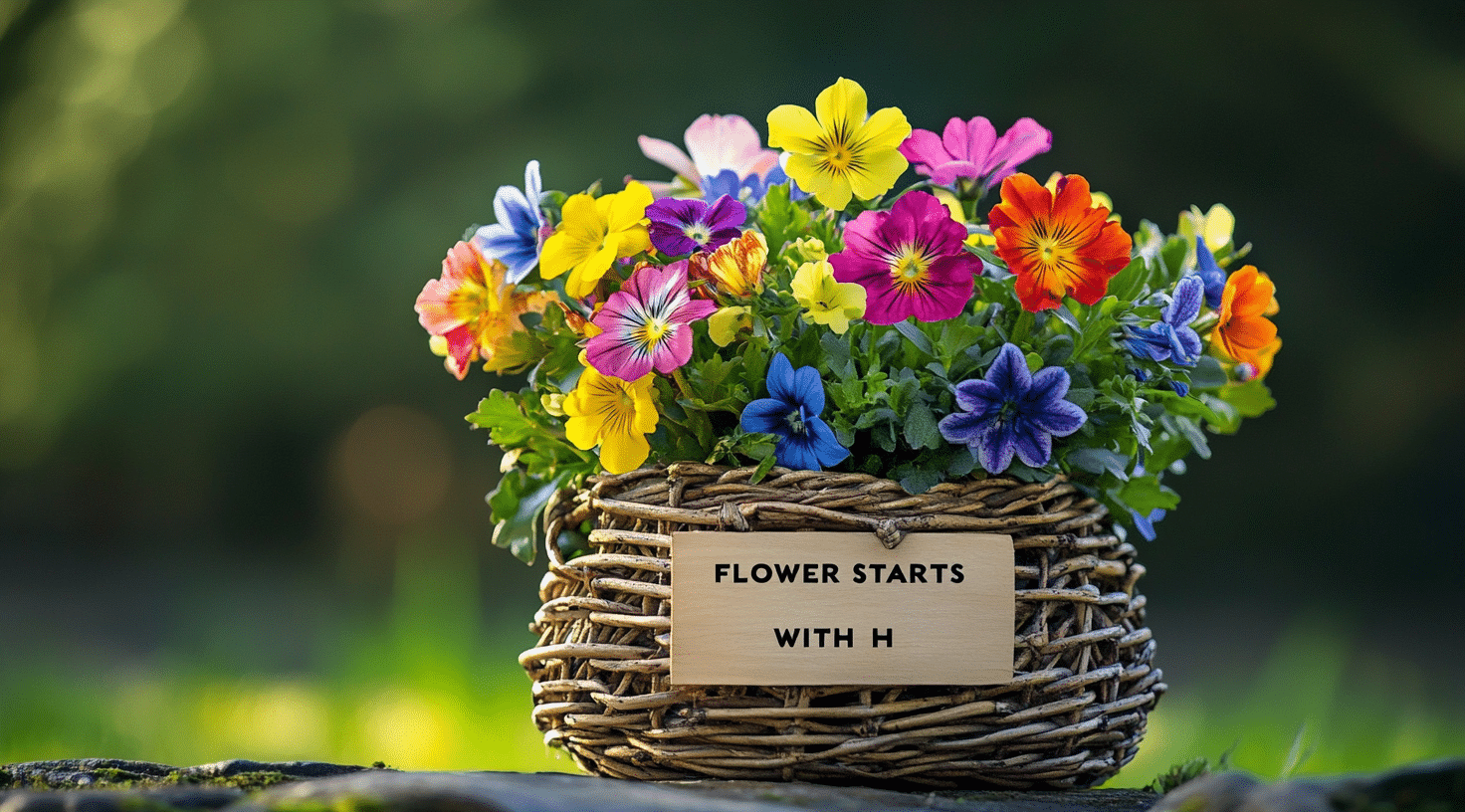
Flowers that start with H are often overlooked in gardening and floral design. But these beautiful blooms deserve attention, too!
From the bold Hibiscus to the gentle Heather, H flowers offer a world of color and charm.
I’ll show you 65 stunning H flowers from around the globe. You’ll learn about their looks, growing needs, and fun facts. By the end, you’ll have fresh ideas for your garden or next bouquet.
Get ready to explore a garden full of H flowers. I’ll take you on a tour of nature’s beauty, one petal at a time.
List of Common Flowers that Start with H You Should Know
1. Hibiscus
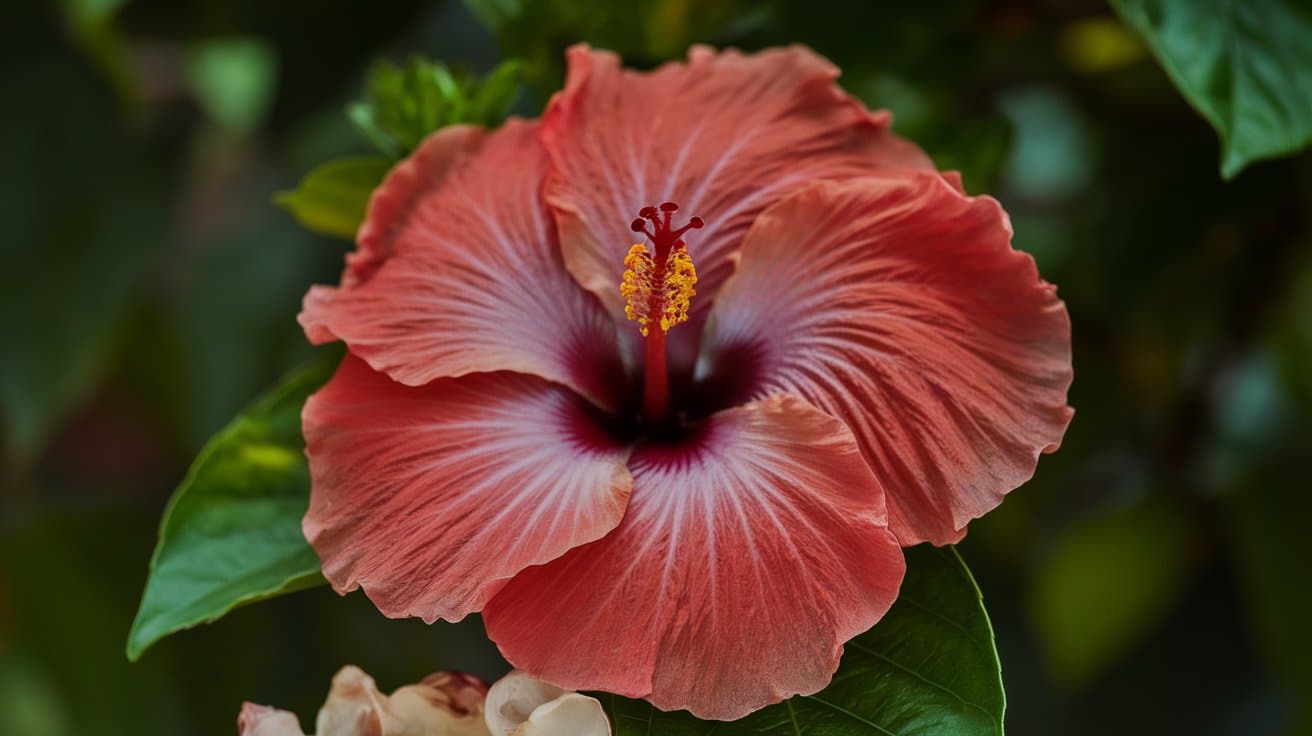
Hibiscus flowers are large, trumpet-shaped blooms in various colors, including red, pink, yellow, and white. They are widely cultivated for their beauty and are significant in many cultures worldwide.
Hibiscus thrives in warm climates with plenty of sunlight and well-drained soil.
| Scientific Name | Hibiscus rosa-sinensis |
|---|---|
| Family: | Malvaceae |
| Number of Species: | Over 300 |
| Native Regions: | Asia |
| Blooming Period: | Summer to Fall |
| Symbolism: | Delicate beauty, love |
Uses and Benefits
- Used in herbal teas and traditional medicine.
- Popular in cosmetics for its moisturizing properties.
- Ornamental use in gardens and landscaping.
2. Hellebore
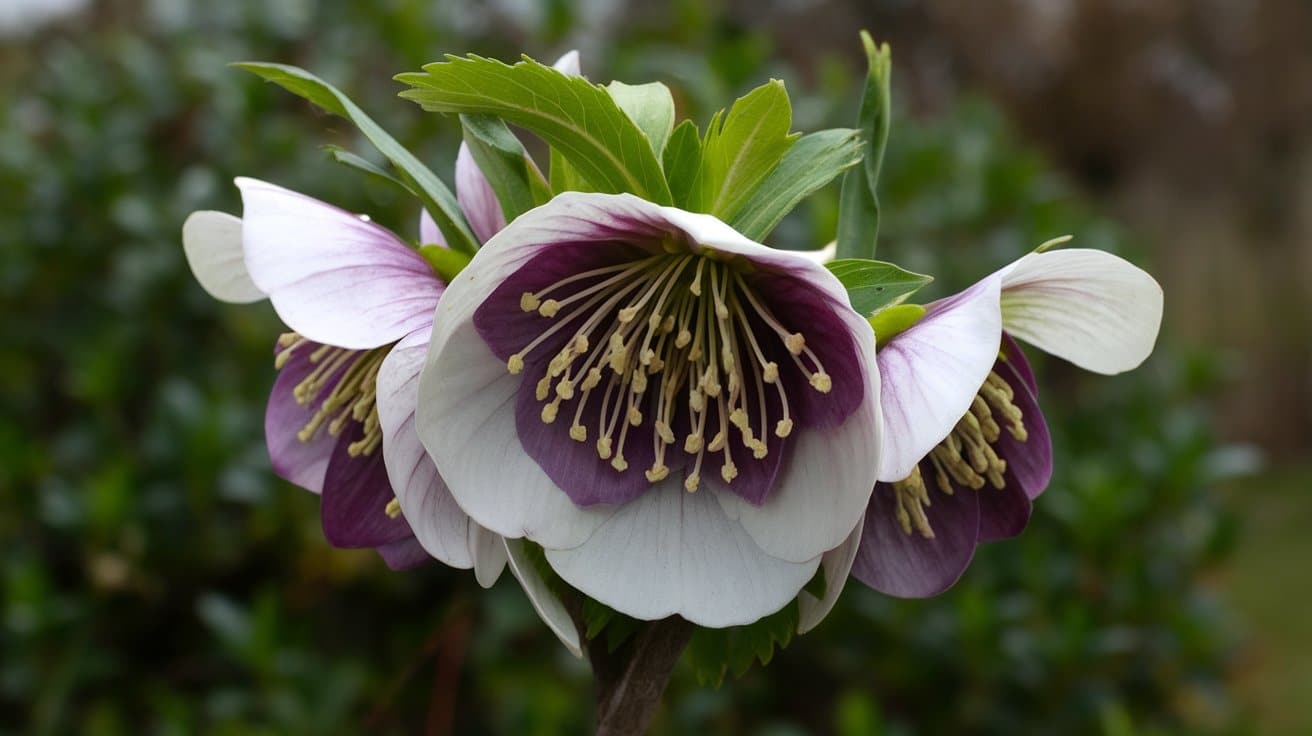
Hellebore flowers, often called Christmas Roses, display shades of white, pink, purple, and green. These evergreen perennials are valued for their ability to bloom in late winter or early spring.
Hellebores prefer shady locations with well-drained soil.
| Scientific Name | Helleborus niger |
|---|---|
| Family: | Ranunculaceae |
| Number of Species: | About 20 |
| Native Regions: | Europe and Asia |
| Blooming Period: | Late Winter to Spring |
| Symbolism: | Serenity, protection |
Uses and Benefits
- Widely used in winter gardens.
- Provides early-season interest when most other flowers are dormant.
- Traditional medicinal uses, though caution is advised due to toxicity.
3. Hyacinth
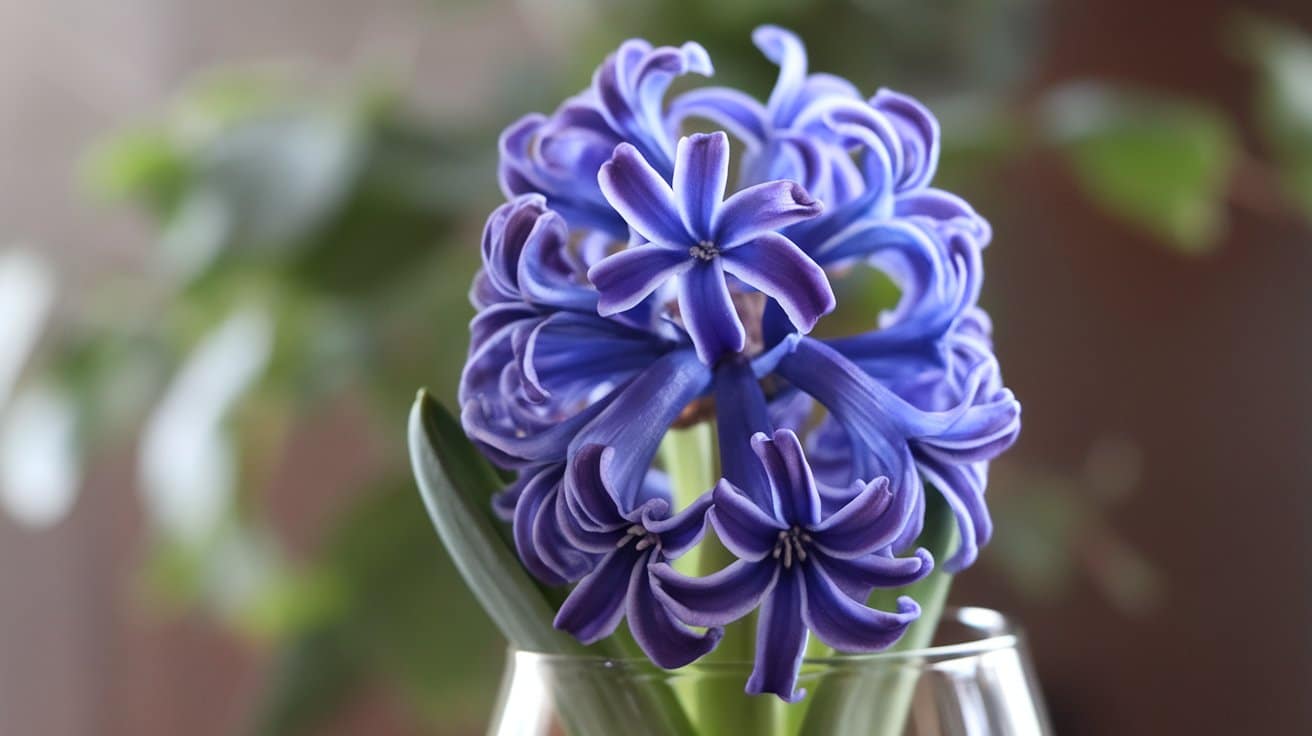
Hyacinths are fragrant flowers that bloom in dense clusters of tubular petals, ranging in colors from deep purple to light pink and white.
Hyacinths are favorites for spring gardens and indoor forcing. They grow best in full sun and well-drained soil.
| Scientific Name | Hyacinthus orientalis |
|---|---|
| Family: | Asparagaceae |
| Number of Species: | 3 |
| Native Regions: | Eastern Mediterranean |
| Blooming Period: | Spring |
| Symbolism: | Sincerity, constancy |
Uses and Benefits
- Popular in perfume making due to its intense fragrance.
- They are frequently used in bulb gardens and as cut flowers.
- Symbolizes the arrival of spring in many cultures.
4. Himalayan Poppy
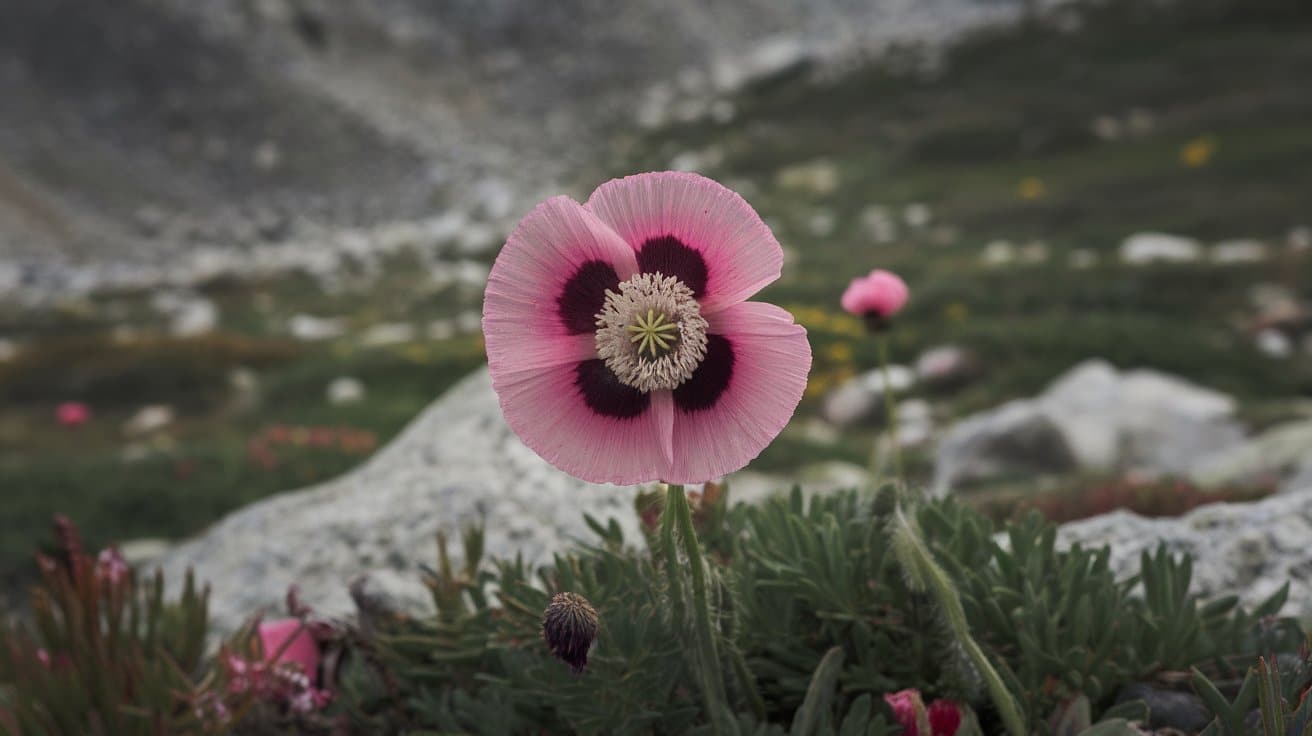
The Himalayan Poppy is famous for its striking blue flowers, which are a rare color in the flower world.
This delicate flower thrives in cool, shaded environments with moist, well-drained soil.
| Scientific Name | Meconopsis betonicifolia |
|---|---|
| Family: | Papaveraceae |
| Number of Species: | Around 40 |
| Native Regions: | Himalayan region |
| Blooming Period: | Early Summer |
| Symbolism: | Dreams, aspirations |
Uses and Benefits
- Primarily ornamental due to its stunning appearance.
- Represents rarity and uniqueness in floral arrangements.
- Celebrated in botanical gardens for its elusive beauty.
5. Horned Poppy
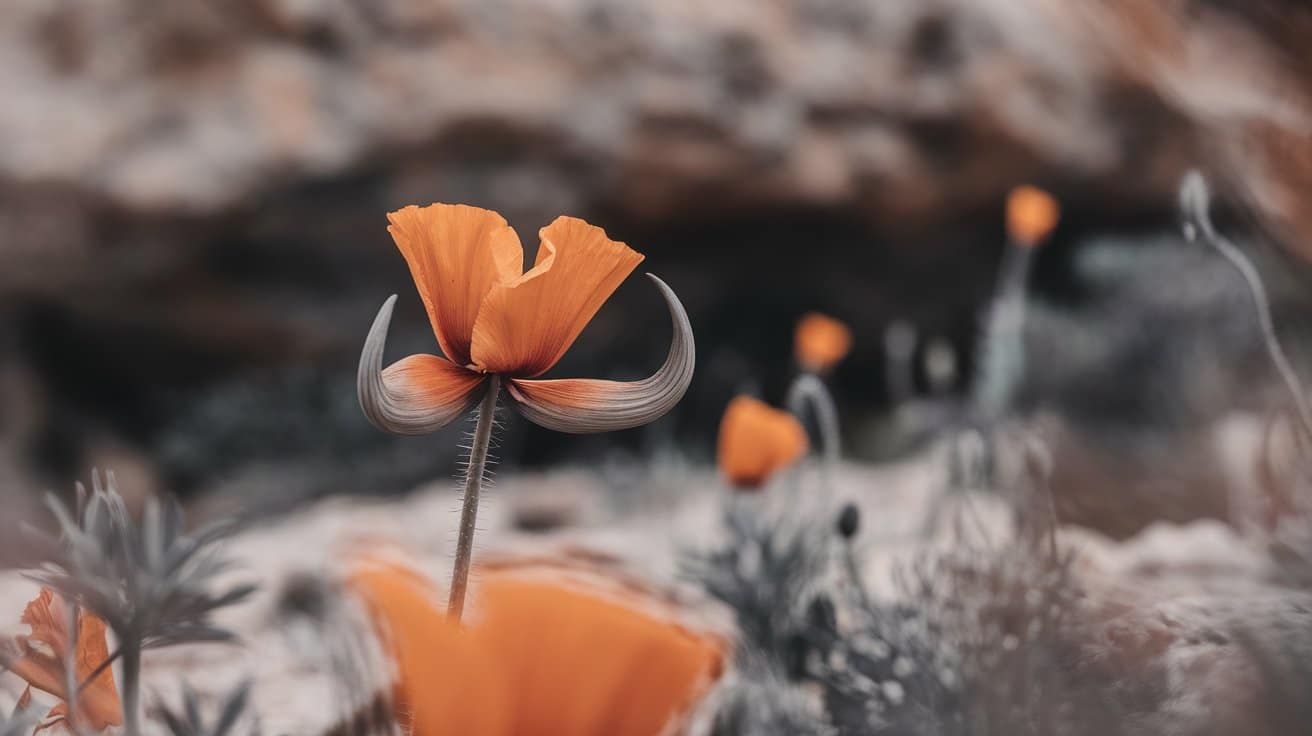
The Horned Poppy is characterized by its bright yellow or orange flowers and distinctive long, curved seed pods that resemble horns.
It grows well in sandy, well-drained soils, often found along coastal areas.
| Scientific Name | Glaucium flavum |
|---|---|
| Family: | Papaveraceae |
| Number of Species: | About 20 |
| Native Regions: | Mediterranean region |
| Blooming Period: | Summer |
| Symbolism: | Strength, resilience |
Uses and Benefits
- Adds color to coastal gardens where few other plants thrive.
- They were historically used for their medicinal properties despite toxicity.
- Erosion control along sandy coasts.
6. Hoya
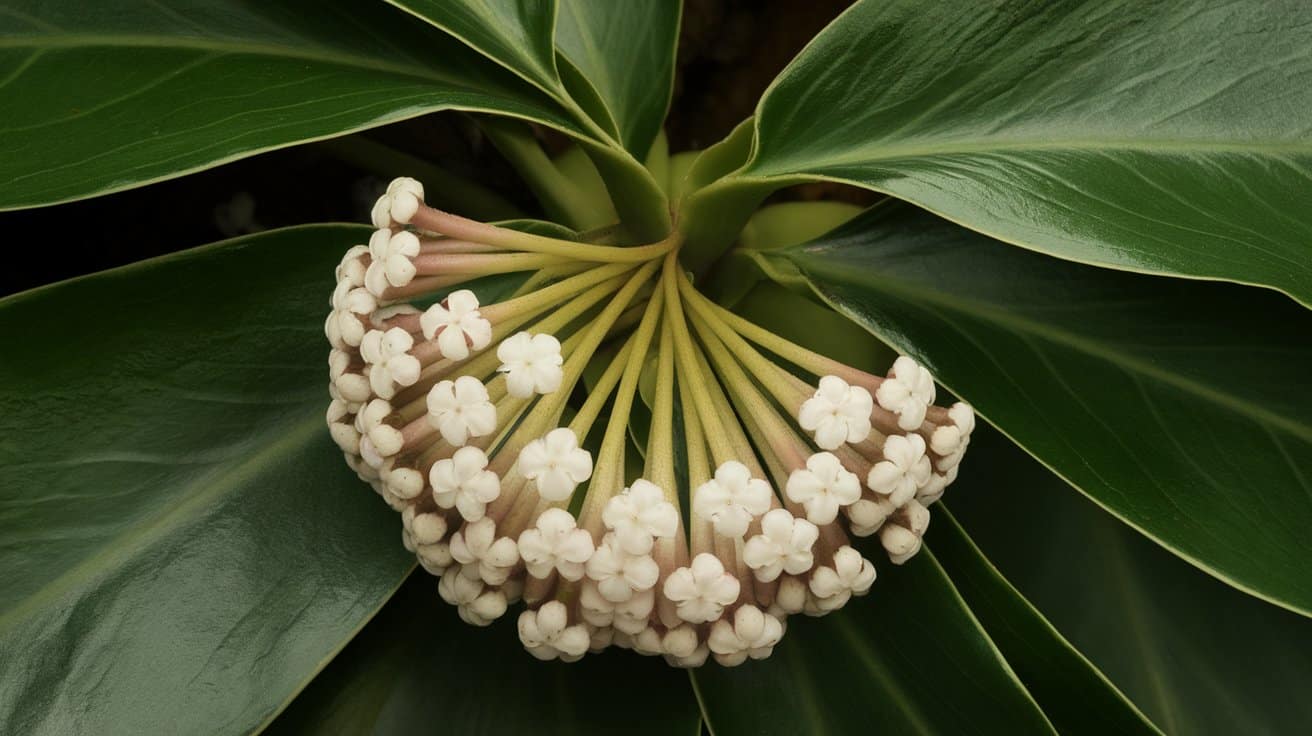
Hoya, also known as the Wax Plant, produces clusters of star-shaped flowers with a waxy texture and sweet fragrance. Due to their attractive foliage and flowers, these plants are popular indoor houseplants.
Hoyas thrive in indirect sunlight and well-drained soil.
| Scientific Name | Hoya carnosa |
|---|---|
| Family: | Apocynaceae |
| Number of Species: | Over 200 |
| Native Regions: | Southeast Asia, Australia |
| Blooming Period: | Summer |
| Symbolism: | Protection, affection |
Uses and Benefits
- Popular houseplant for indoor gardening enthusiasts.
- Air purifying properties, making it ideal for homes.
- They are often used in hanging baskets due to its trailing growth habit.
7. Hawaiian Hibiscus
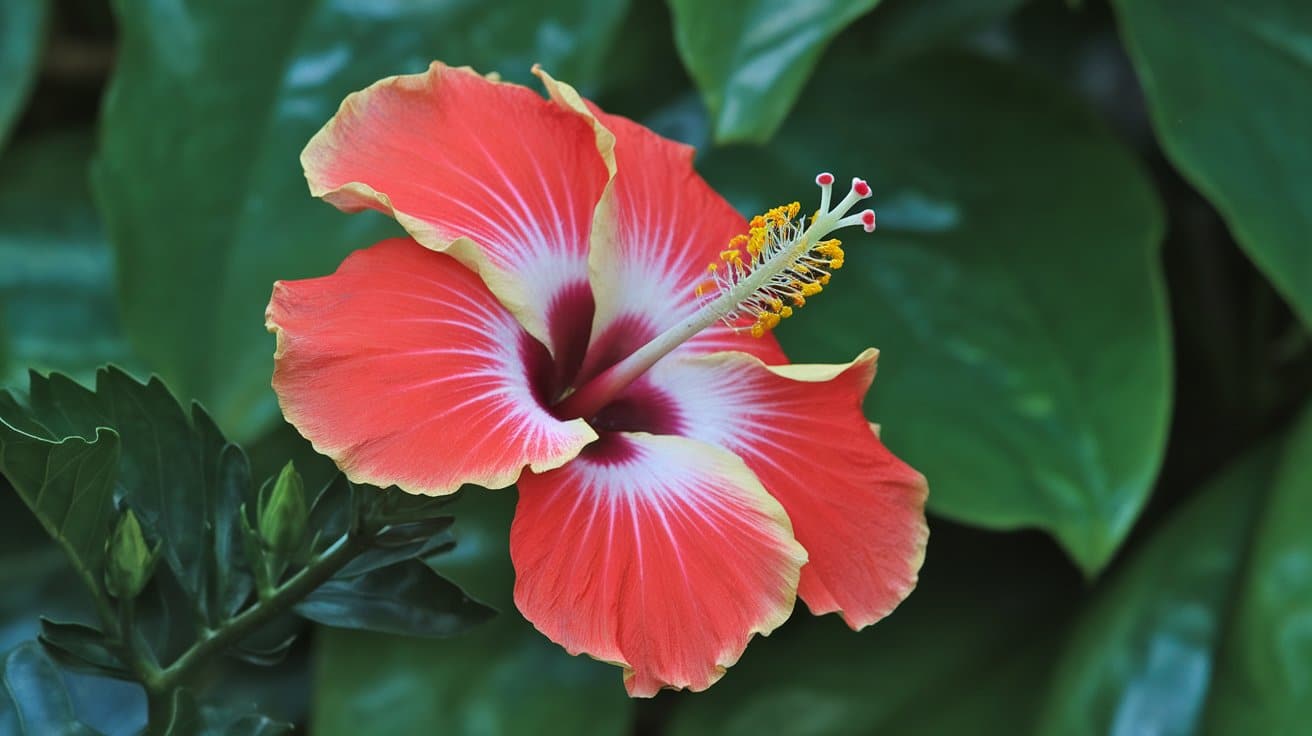
The Hawaiian Hibiscus is a symbol of tropical beauty, with large, bright flowers in shades of yellow, pink, and red. These flowers are vital in Hawaiian culture, often used in leis and other ceremonial decorations.
Hawaiian Hibiscus prefers warm climates and plenty of sunlight.
| Scientific Name | Hibiscus brackenridgei |
|---|---|
| Family: | Malvaceae |
| Number of Species: | 7 native species |
| Native Regions: | Hawaii |
| Blooming Period: | Year-round in warm climates |
| Symbolism: | Beauty, delicate charm |
Uses and Benefits
- Cultural symbol in Hawaii, used in traditional ceremonies.
- Ornamental use in tropical gardens and landscaping.
- Conservation efforts are in place to protect endangered species.
8. Heliconia
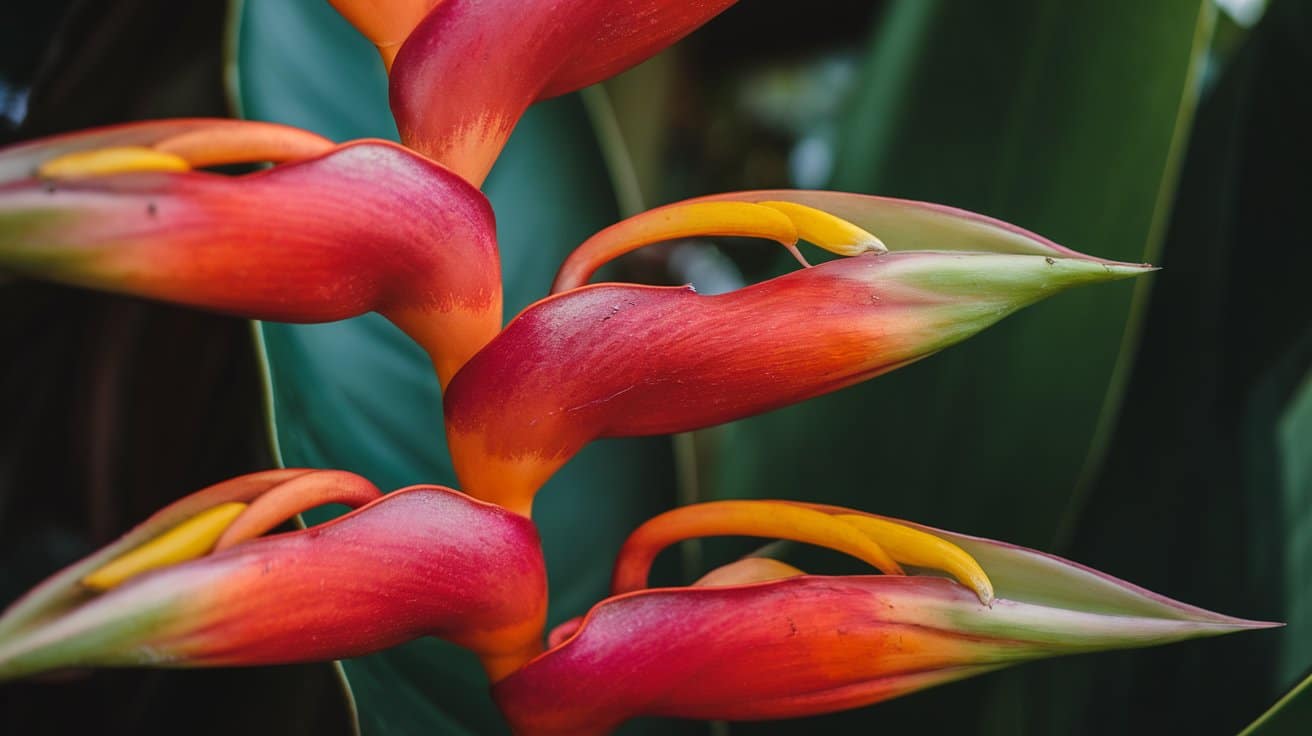
Heliconia, often known as Lobster Claw due to its distinctive shape, features bright red, orange, or yellow bracts with small flowers hidden inside.
This tropical plant thrives in warm, humid climates with rich, moist soil.
| Scientific Name | Heliconia rostrata |
|---|---|
| Family: | Heliconiaceae |
| Number of Species: | Over 200 |
| Native Regions: | Central and South America |
| Blooming Period: | Year-round in tropical climates |
| Symbolism: | Fertility, abundance |
Uses and Benefits
- Popular in tropical landscaping for its bold appearance.
- They are used in floral arrangements for its long-lasting bracts.
- Provides shelter and food for tropical wildlife, including hummingbirds.
9. Heliotropium
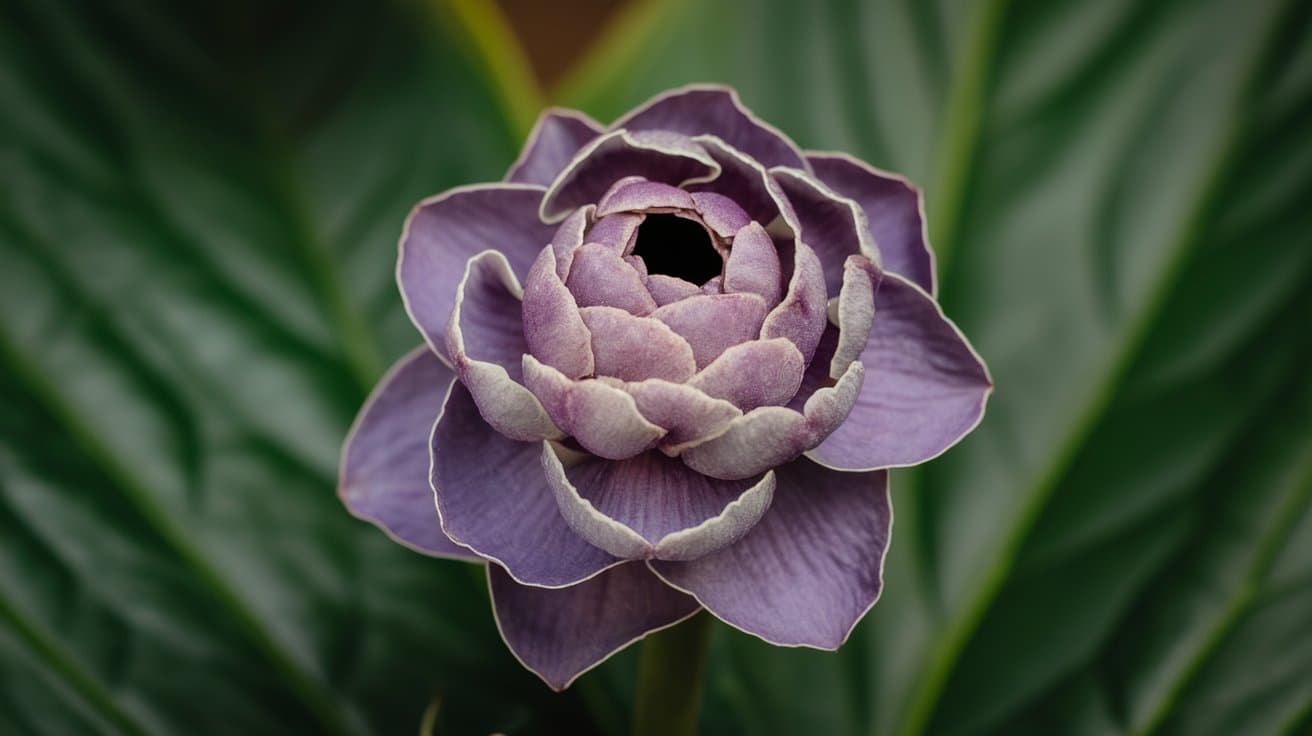
Heliotropium, or Cherry Pie, is known for its sweetly scented, small violet, blue, or white flowers that grow in clusters.
This flower is commonly grown for its pleasant fragrance and prefers full sun with well-drained soil.
| Scientific Name | Heliotropium arborescens |
|---|---|
| Family: | Boraginaceae |
| Number of Species: | Over 250 |
| Native Regions: | South America |
| Blooming Period: | Summer to Fall |
| Symbolism: | Devotion, eternal love |
Uses and Benefits
- Fragrance used in perfumery and potpourri.
- Ornamental use in garden beds and containers.
- Attracts pollinators such as bees and butterflies.
10. Hosta
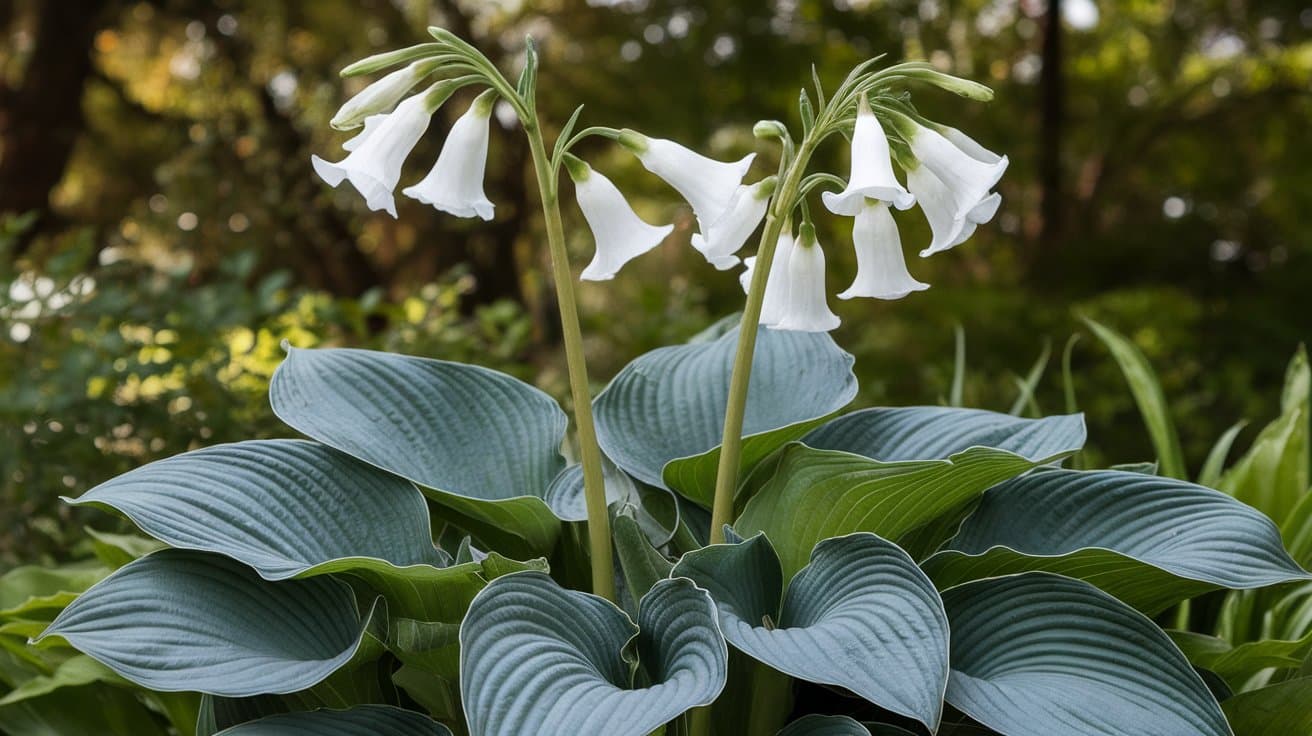
Hostas are known for their lush, green foliage and delicate lavender or white flowers that bloom on tall stalks. These shade-loving plants are popular in gardens because they thrive in low light.
Hostas prefer rich, moist soil and partial to full shade.
| Scientific Name | Hosta spp. |
|---|---|
| Family: | Asparagaceae |
| Number of Species: | Over 40 |
| Native Regions: | Northeast Asia |
| Blooming Period: | Summer |
| Symbolism: | Devotion, friendship |
Uses and Benefits
- They are widely used in landscaping, particularly in shaded areas.
- Helps prevent soil erosion due to dense foliage.
- Edible leaves used in some Asian cuisines.
11. Hollyhock
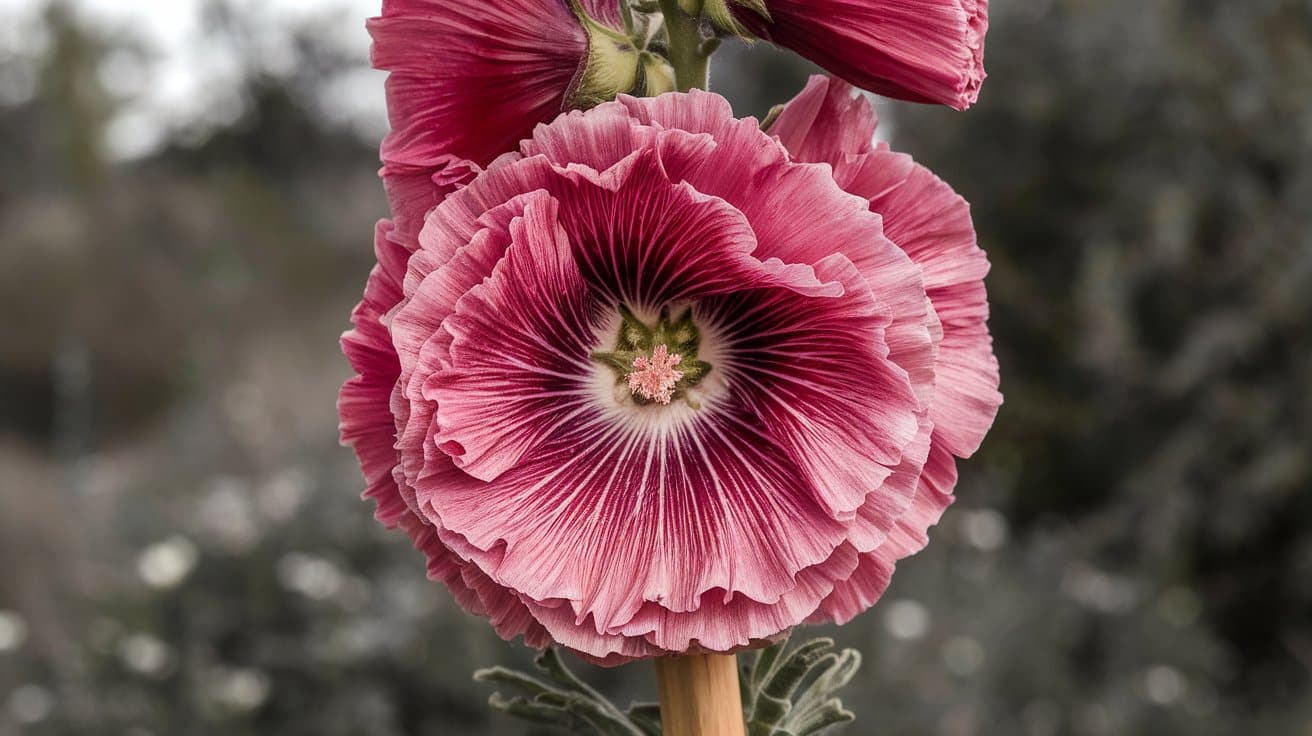
Hollyhocks are tall, striking plants with large, showy flowers in a variety of colors, including pink, red, yellow, and white. They are often seen growing along fences or garden walls.
Hollyhocks thrive in full sun and well-drained soil.
| Scientific Name | Alcea rosea |
|---|---|
| Family: | Malvaceae |
| Number of Species: | About 60 |
| Native Regions: | Asia and Europe |
| Blooming Period: | Summer to Fall |
| Symbolism: | Ambition, fertility |
Uses and Benefits
- Traditional use as a natural dye for fabrics.
- Popular ornamental plant for cottage gardens.
- Attracts pollinators such as bees and butterflies.
12. Hydrangea
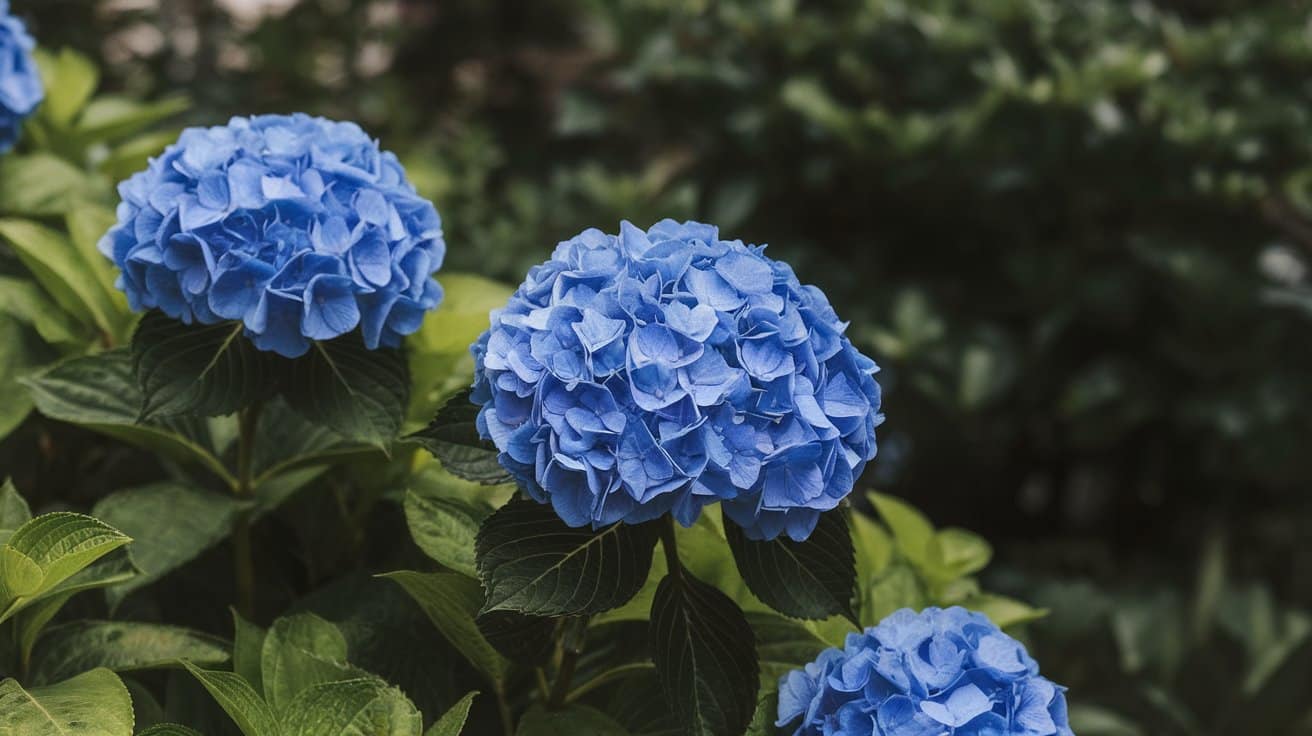
Hydrangeas are beloved for their large, round flower clusters that can range in color from blue to pink, depending on soil pH.
These versatile shrubs are a staple in many gardens around the world. Hydrangeas prefer partial shade and rich, well-drained soil.
| Scientific Name | Hydrangea macrophylla |
|---|---|
| Family: | Hydrangeaceae |
| Number of Species: | About 75 |
| Native Regions: | Asia and the Americas |
| Blooming Period: | Spring to Summer |
| Symbolism: | Gratitude, heartfelt emotions |
Uses and Benefits
- Popular in floral arrangements and as a cut flower.
- They are used in landscaping for their vibrant, long-lasting blooms.
- Traditional medicinal uses in some cultures.
13. Hops
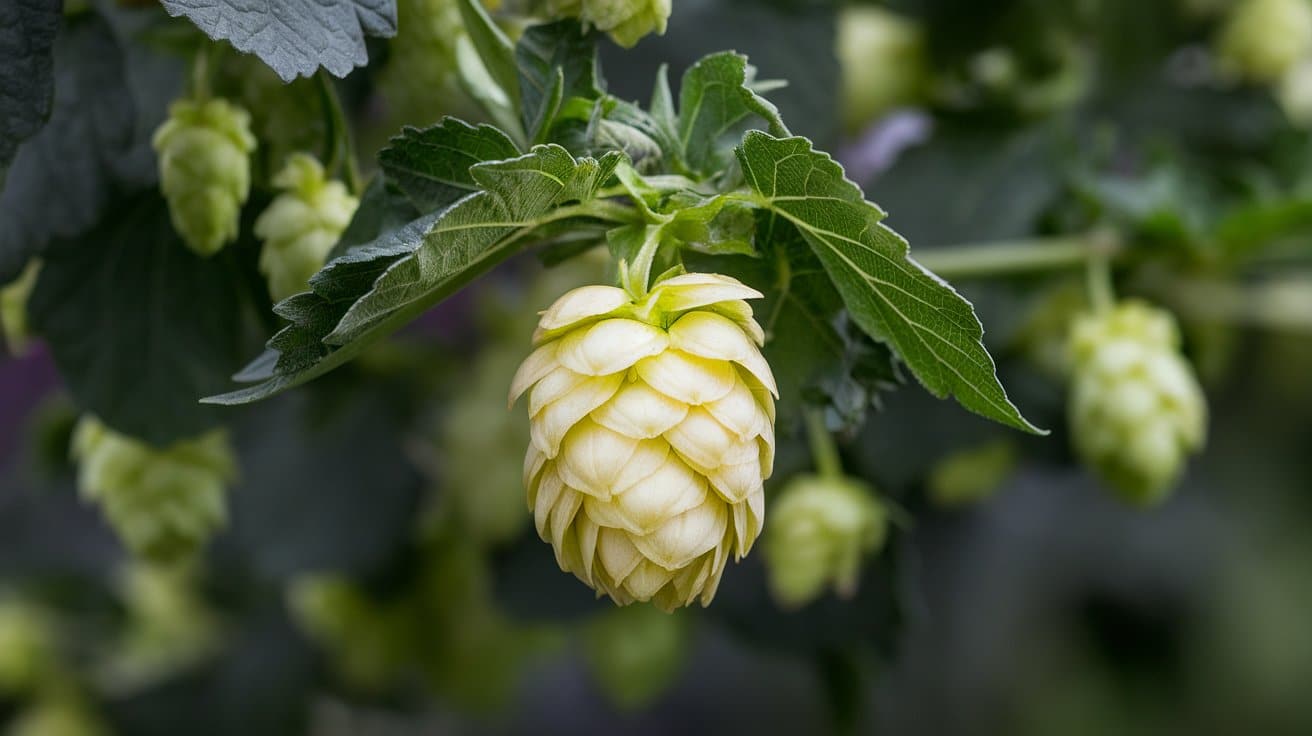
Hops are climbing plants best known for their cone-shaped flowers, which are used in brewing beer. The flowers are green and have a distinctive bitter taste.
Hops thrive in temperate climates with plenty of sunlight and well-drained soil.
| Scientific Name | Humulus lupulus |
|---|---|
| Family: | Cannabaceae |
| Number of Species: | 3 |
| Native Regions: | Europe, Asia, North America |
| Blooming Period: | Late Summer to Fall |
| Symbolism: | Pleasure, relaxation |
Uses and Benefits
- Essential ingredient in brewing beer for flavor and preservation.
- They are used in herbal medicine for its sedative properties.
- It is grown as an ornamental climbing plant.
14. Helianthus (Sunflower)
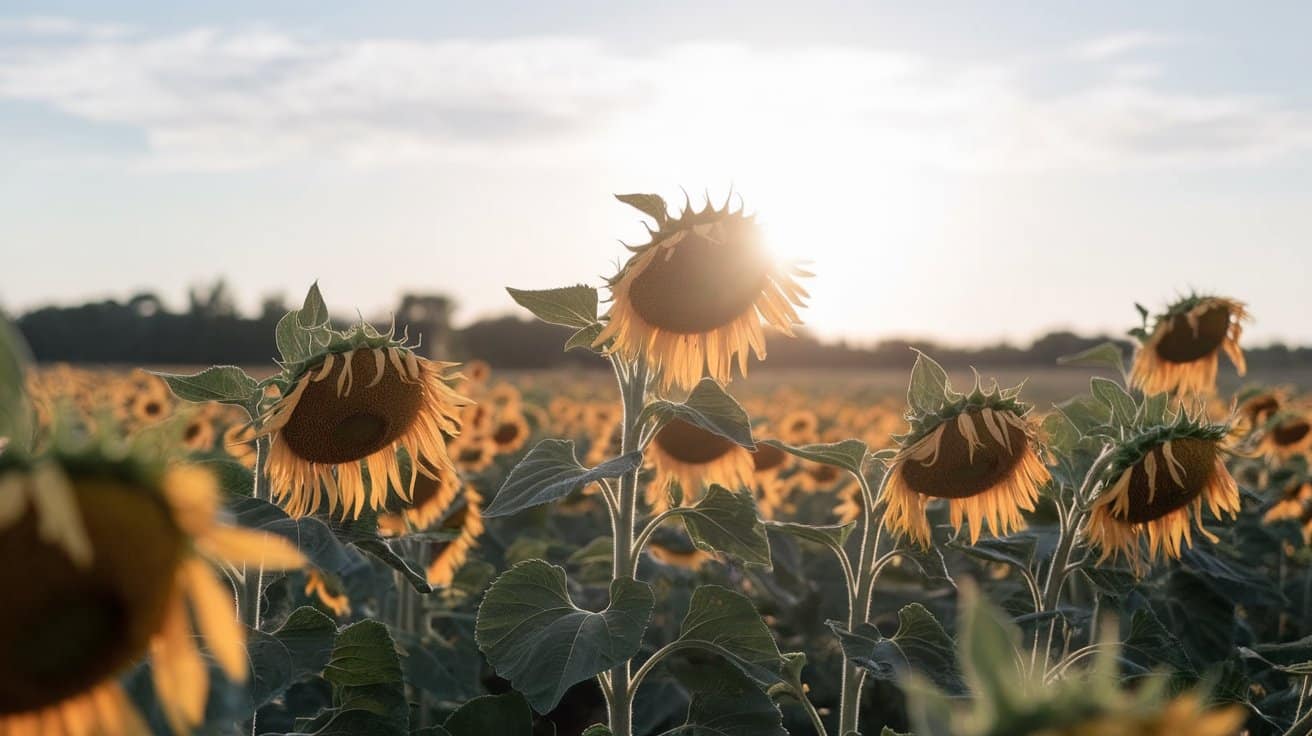
Sunflowers are tall, bright yellow flowers with large, round heads that follow the sun throughout the day. They are significant in agriculture for their seeds and oil.
Sunflowers prefer full sun and well-drained soil.
| Scientific Name | Helianthus annuus |
|---|---|
| Family: | Asteraceae |
| Number of Species: | Around 70 |
| Native Regions: | North America |
| Blooming Period: | Summer to Fall |
| Symbolism: | Adoration, loyalty |
Uses and Benefits
- They are widely used in agriculture for sunflower oil and seeds.
- Ornamental use in gardens and landscaping.
- Attracts birds and pollinators.
15. Heuchera

Heuchera, commonly known as Coral Bells, features vibrant foliage in shades of green, purple, and red, with small bell-shaped flowers.
These perennials are popular for adding color to shaded garden areas. Heucheras prefer partial shade and well-drained soil.
| Scientific Name | Heuchera spp. |
|---|---|
| Family: | Saxifragaceae |
| Number of Species: | About 50 |
| Native Regions: | North America |
| Blooming Period: | Late Spring to Summer |
| Symbolism: | Versatility, creativity |
Uses and Benefits
- Decorative foliage adds color to garden borders and containers.
- Low-maintenance plant for shaded gardens.
- Attracts pollinators, especially hummingbirds.
16. Hydrangea paniculata
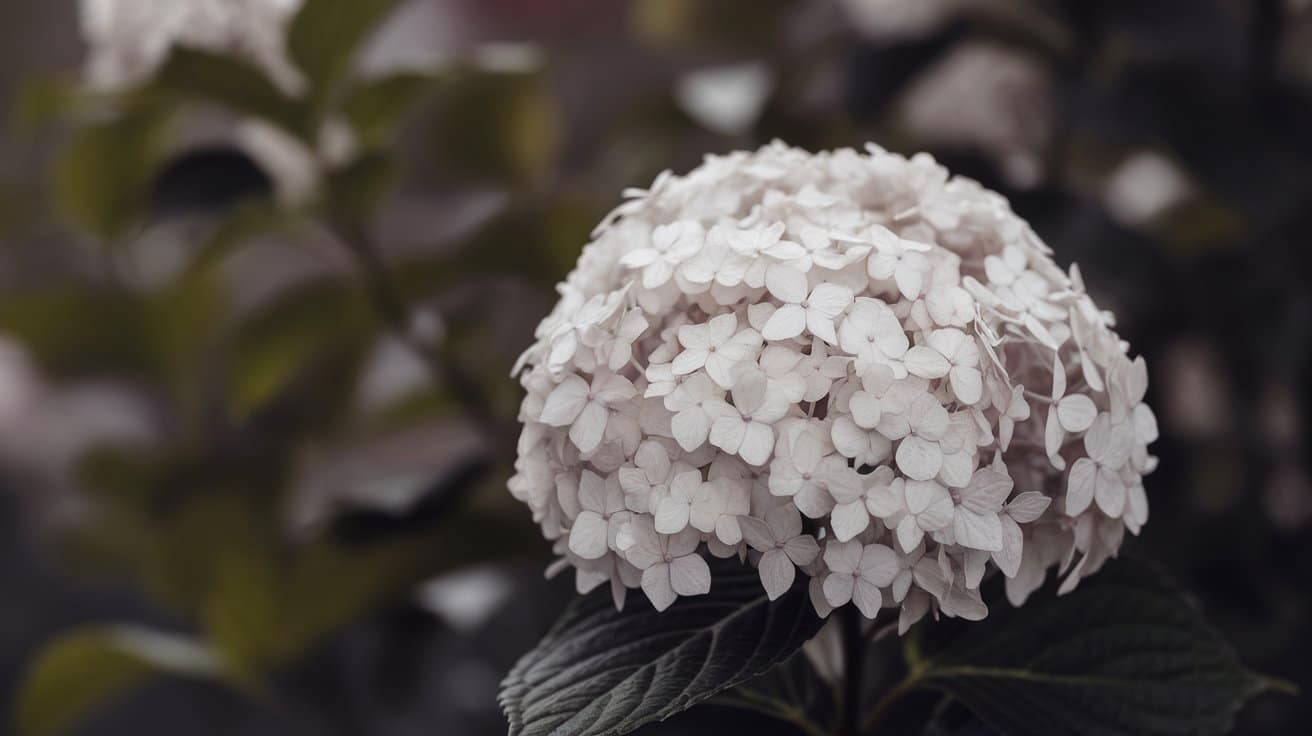
Hydrangea paniculata, or Panicle Hydrangea, is known for its large, cone-shaped flower clusters that start white and turn pink as they age.
This hardy shrub thrives in full sun to partial shade and well-drained soil.
| Scientific Name | Hydrangea paniculata |
|---|---|
| Family: | Hydrangeaceae |
| Number of Species: | About 75 |
| Native Regions: | Asia |
| Blooming Period: | Summer to Fall |
| Symbolism: | Grace, enduring love |
Uses and Benefits
- Popular in floral arrangements for its long-lasting blooms.
- They are often used in landscaping as hardy, low-maintenance shrub.
- Provides year-round interest in the garden, with flowers that change color as they mature.
17. Holly
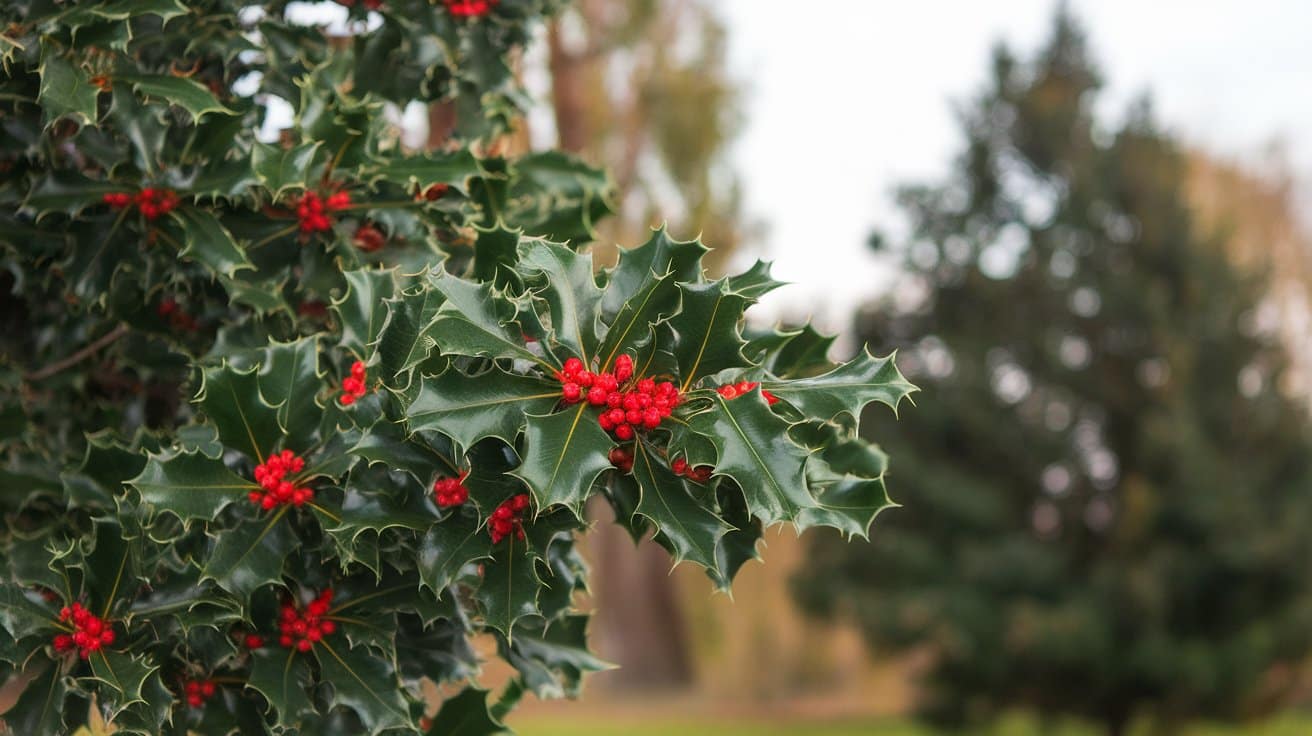
Holly is an evergreen plant with spiky leaves and bright red berries, commonly associated with Christmas decorations.
Holly plants are tough and can grow in a variety of conditions, from full sun to deep shade.
| Scientific Name | Ilex spp. |
|---|---|
| Family: | Aquifoliaceae |
| Number of Species: | Over 400 |
| Native Regions: | Temperate regions worldwide |
| Blooming Period: | Spring to Early Summer |
| Symbolism: | Protection, good fortune |
Uses and Benefits
- They are widely used in holiday decorations, particularly for wreaths and garlands.
- Ornamental value in gardens for its year-round foliage and bright berries.
- They are historically used in traditional medicine for various ailments.
18. Helipterum
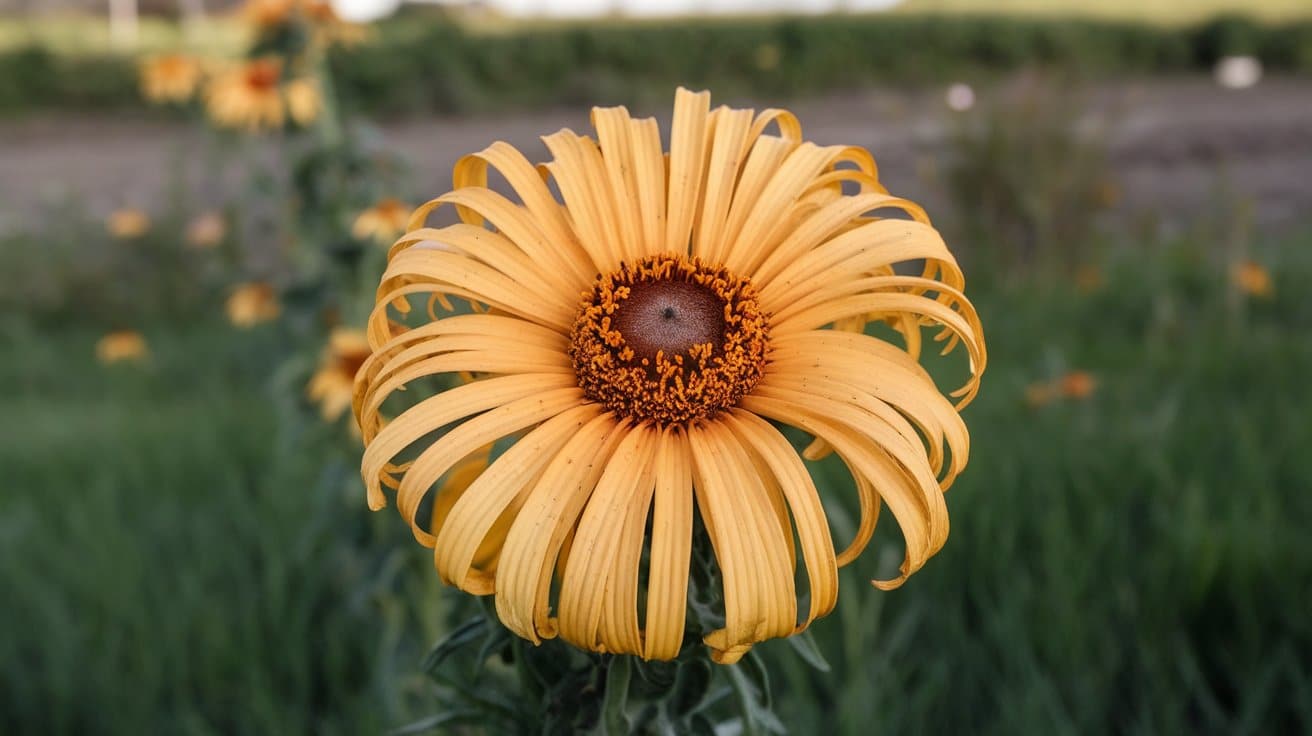
Helipterum, also known as Everlasting Daisy, produces papery, daisy-like flowers in shades of white, pink, and yellow.
These flowers are popular for dried arrangements because they retain their color and shape after drying. Helipterum thrives in well-drained soil and full sun.
| Scientific Name | Helipterum roseum |
|---|---|
| Family: | Asteraceae |
| Number of Species: | About 100 |
| Native Regions: | Australia |
| Blooming Period: | Spring to Summer |
| Symbolism: | Immortality, remembrance |
Uses and Benefits
- Commonly used in dried flower arrangements.
- Ideal for xeriscaping due to its drought tolerance.
- Provides long-lasting color in gardens with poor soil.
19. Hydrangea macrophylla
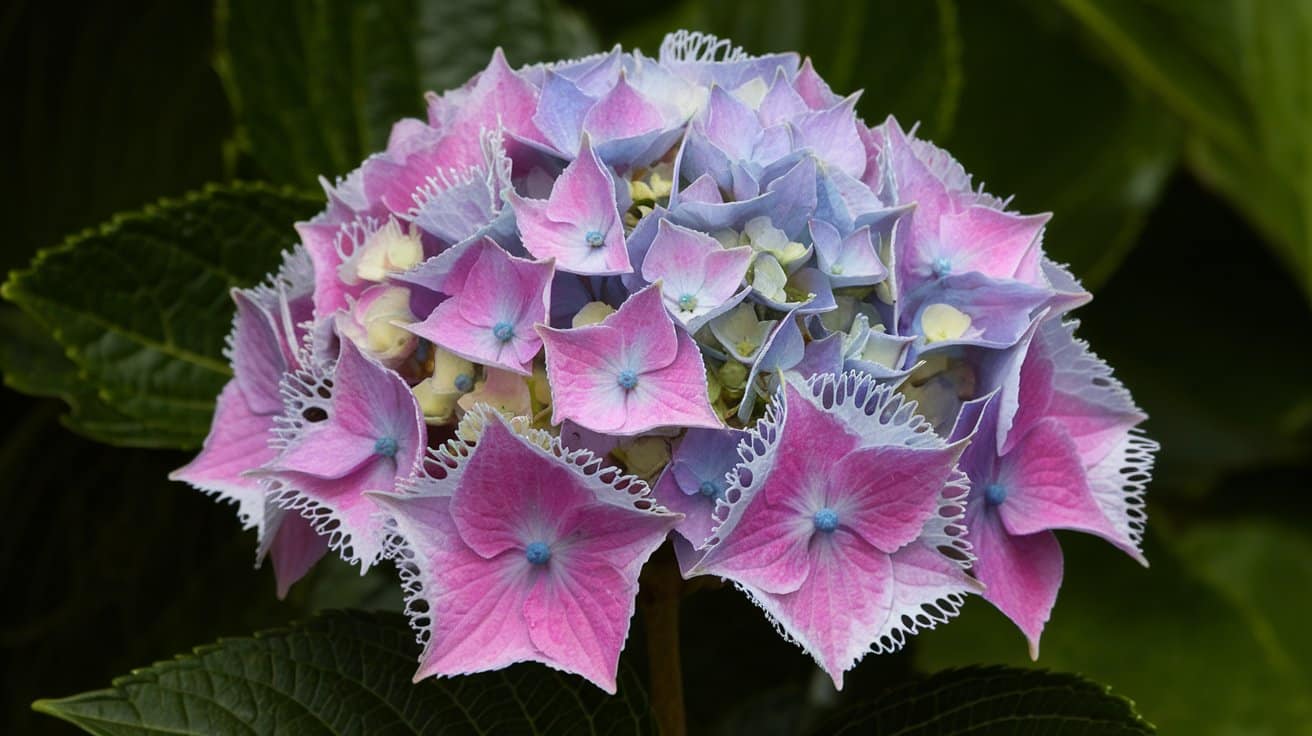
Hydrangea macrophylla, or Bigleaf Hydrangea, is known for its large, rounded flower heads that can range from blue to pink, depending on the soil’s pH.
It is one of the most popular hydrangeas in gardens worldwide. This plant prefers partial shade and moist, well-drained soil.
| Scientific Name | Hydrangea macrophylla |
|---|---|
| Family: | Hydrangeaceae |
| Number of Species: | About 75 |
| Native Regions: | Japan |
| Blooming Period: | Summer |
| Symbolism: | Grace, abundance |
Uses and Benefits
- Widely used in landscaping for its showy, colorful blooms.
- Popular in floral arrangements, both fresh and dried.
- Symbolic in many cultures, representing gratitude and understanding.
20. Humulus (Hops)
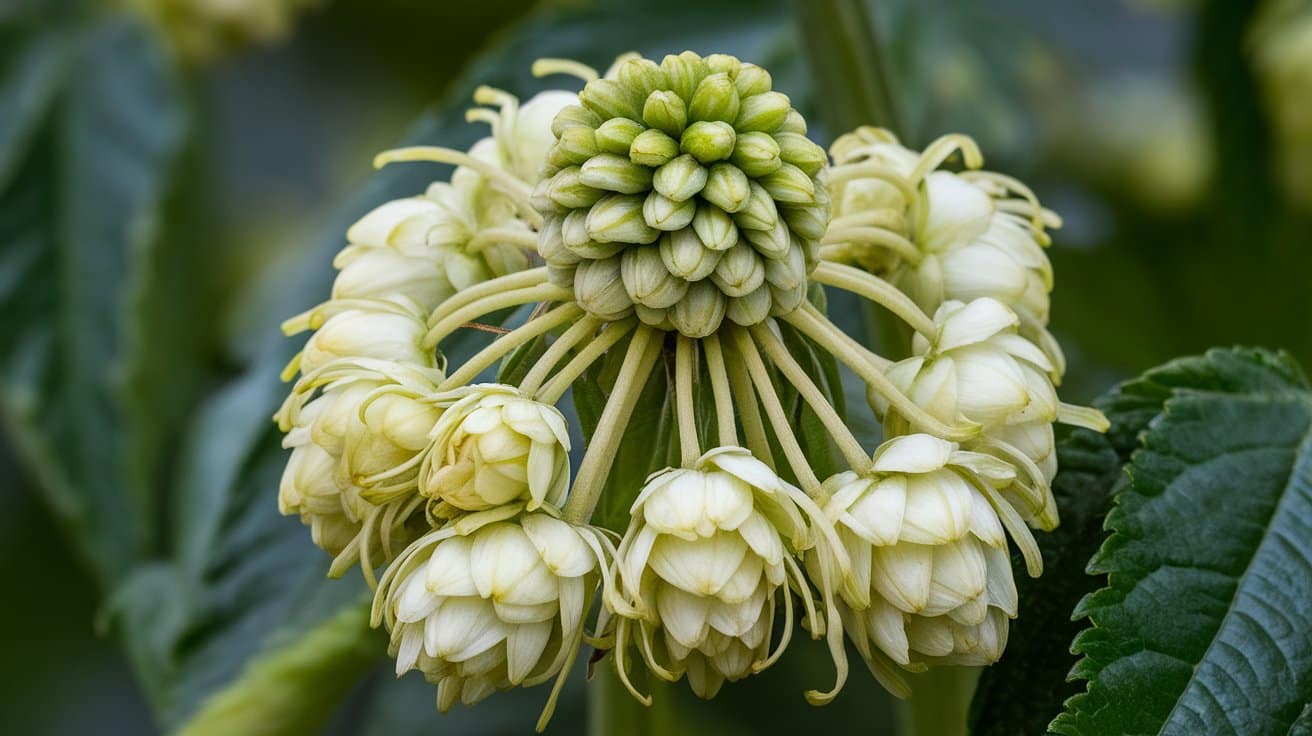
Humulus, commonly known as hops, is a climbing plant best known for its use in brewing beer. Its cone-shaped flowers have a distinctive, bitter taste that balances the sweetness of malt in beer.
Hops grow best in temperate climates with plenty of sun and well-drained soil.
| Scientific Name | Humulus lupulus |
|---|---|
| Family: | Cannabaceae |
| Number of Species: | 3 |
| Native Regions: | Europe, Asia, North America |
| Blooming Period: | Late Summer to Fall |
| Symbolism: | Pleasure, relaxation |
Uses and Benefits
- Essential in brewing beer for flavor and preservation.
- Used in herbal medicine for its calming effects.
- Cultivated as an ornamental climbing plant.
21. Hyssop
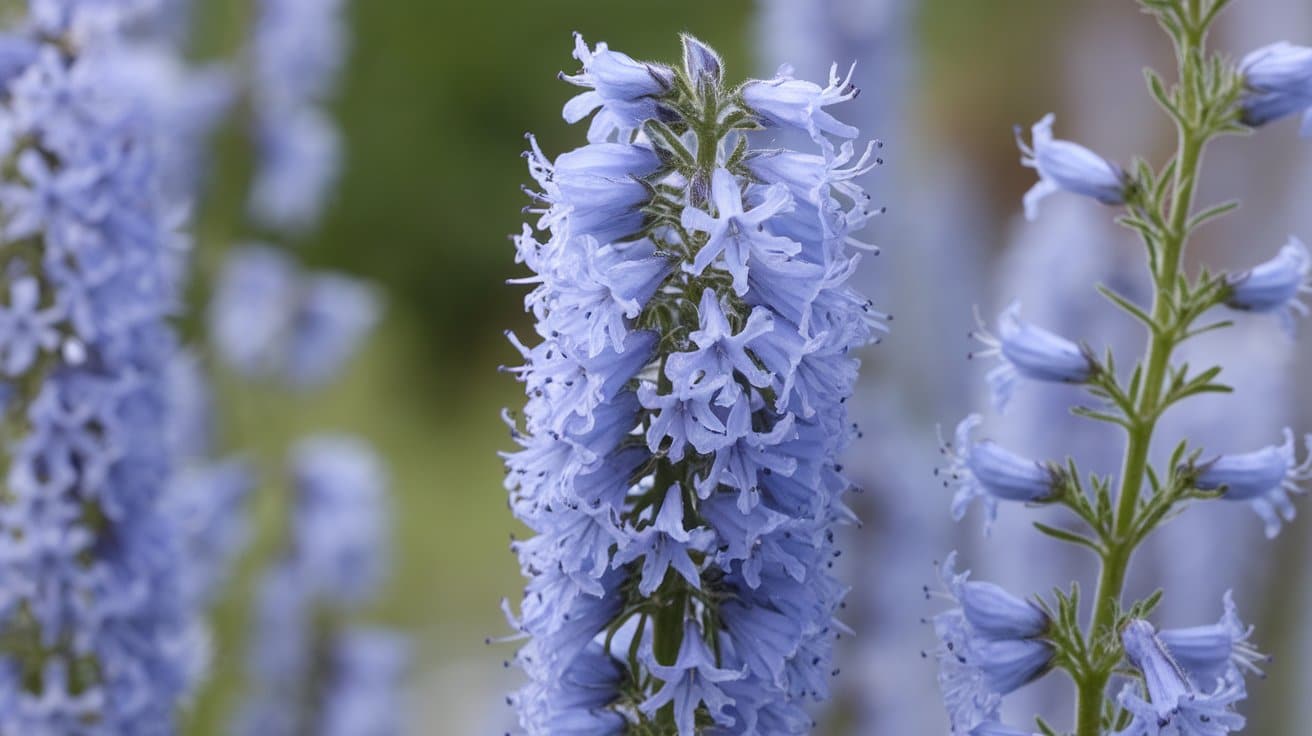
Hyssop is an aromatic plant with spiky blue, pink, or white flowers. It has been used since ancient times for its medicinal properties and as a flavoring in foods and liqueurs.
Hyssop thrives in full sun and well-drained soil.
| Scientific Name | Hyssopus officinalis |
|---|---|
| Family: | Lamiaceae |
| Number of Species: | About 10 |
| Native Regions: | Southern Europe, Middle East |
| Blooming Period: | Summer |
| Symbolism: | Purity, protection |
Uses and Benefits
- Traditional use in herbal medicine for respiratory and digestive ailments.
- Used as a culinary herb in Mediterranean cuisine.
- Attracts pollinators, especially bees.
22. Heliotrope
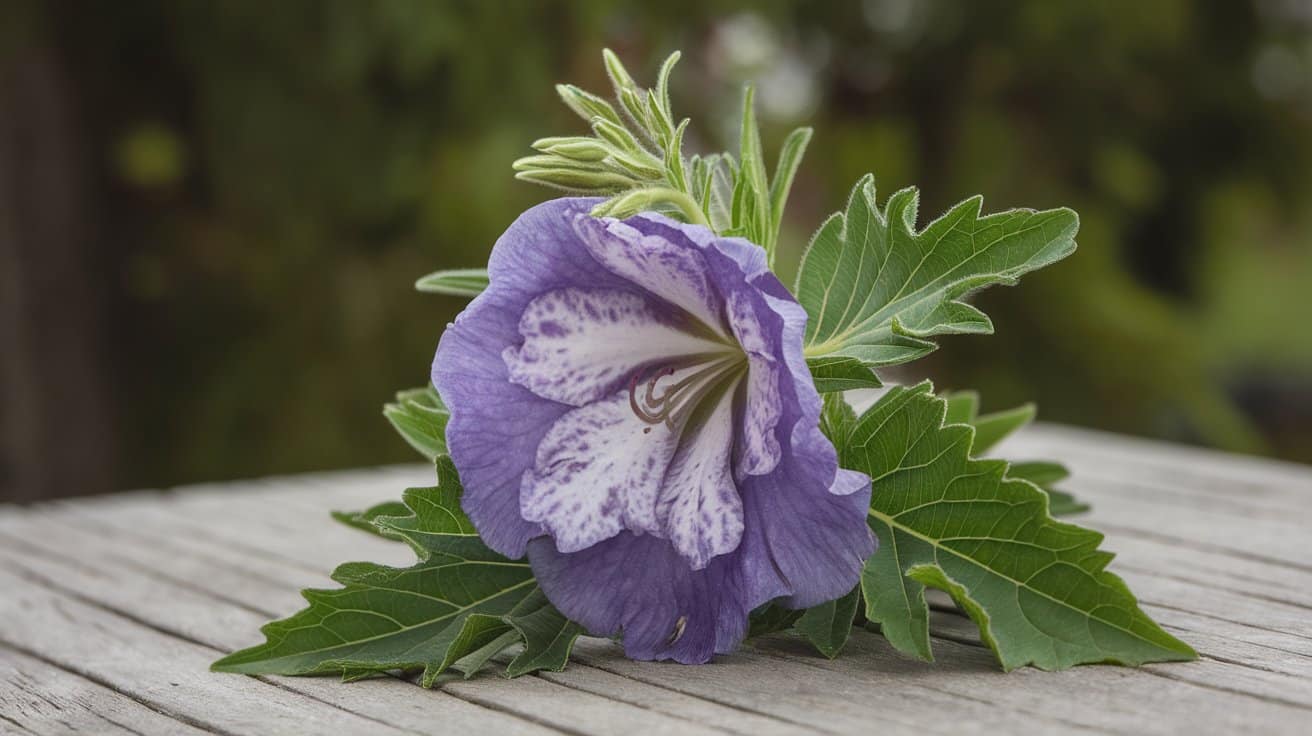
Heliotrope is known for its beautiful clusters of small, fragrant purple, blue, or white flowers. This plant is cherished in gardens for its sweet vanilla or almond-like fragrance.
It thrives in full sun and well-drained soil.
| Scientific Name | Heliotropium arborescens |
|---|---|
| Family: | Boraginaceae |
| Number of Species: | Over 250 |
| Native Regions: | South America |
| Blooming Period: | Summer to Fall |
| Symbolism: | Devotion, eternal love |
Uses and Benefits
- Fragrance used in perfumes and potpourri.
- Ornamental use in garden borders and containers.
- Attracts pollinators such as butterflies and bees.
23. Hedera (Ivy)
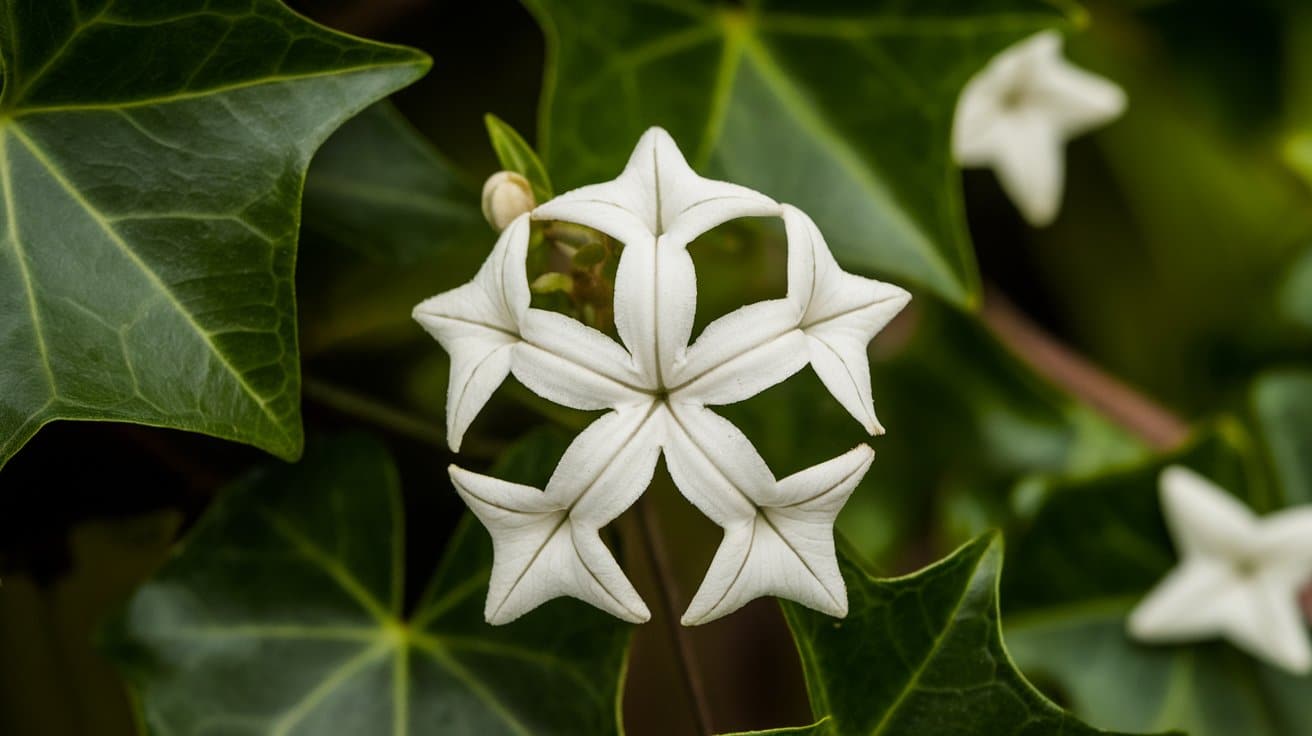
Hedera, commonly known as Ivy, is an evergreen climbing plant with glossy, dark green leaves that can cover walls, fences, and tree trunks, adding a touch of greenery year-round.
Ivy is a versatile plant that thrives in various conditions, from full sun to deep shade. It is often used in gardens and landscapes as ground cover and for decorative purposes.
| Scientific Name: | Hedera helix |
|---|---|
| Family: | Araliaceae |
| Number of Species: | About 15 |
| Native Regions: | Europe, Asia, North Africa |
| Blooming Period: | Fall |
| Symbolism: | Fidelity, eternity |
Uses and Benefits
- Widely used in landscaping to cover walls and fences and as ground cover in shaded areas.
- It is popular in floral arrangements and wedding decorations due to its symbolic meaning.
- Provides habitat for birds and insects in urban environments.
24. Hypericum
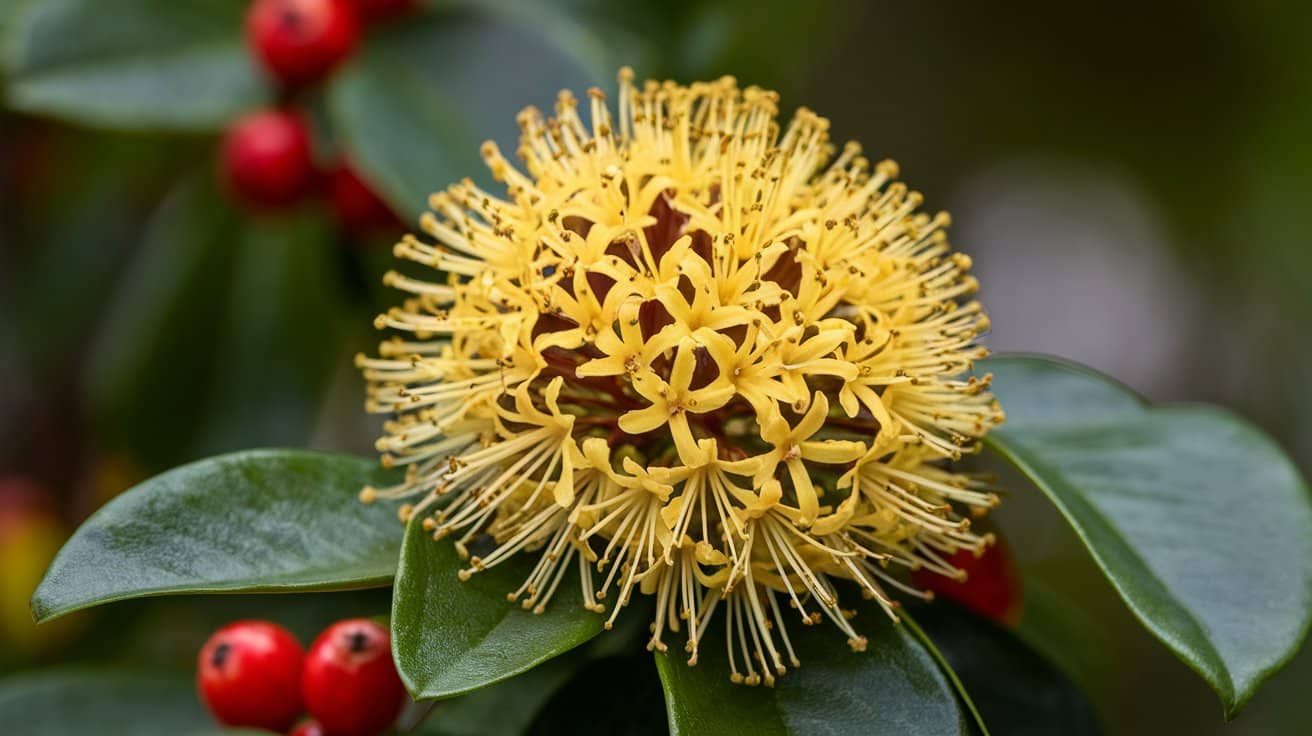
Hypericum, also known as St. John’s Wort, produces bright yellow flowers with numerous stamens that give the bloom a fuzzy appearance. It is widely known for its medicinal properties, especially in treating depression.
Hypericum thrives in full sun and well-drained soil.
| Scientific Name | Hypericum perforatum |
|---|---|
| Family: | Hypericaceae |
| Number of Species: | Over 400 |
| Native Regions: | Europe, North Africa, Western Asia |
| Blooming Period: | Summer |
| Symbolism: | Protection, healing |
Uses and Benefits
- Widely used in herbal medicine for its antidepressant properties.
- Ornamental use in gardens for its bright yellow flowers.
- Historically used to ward off evil spirits.
25. Hibbertia
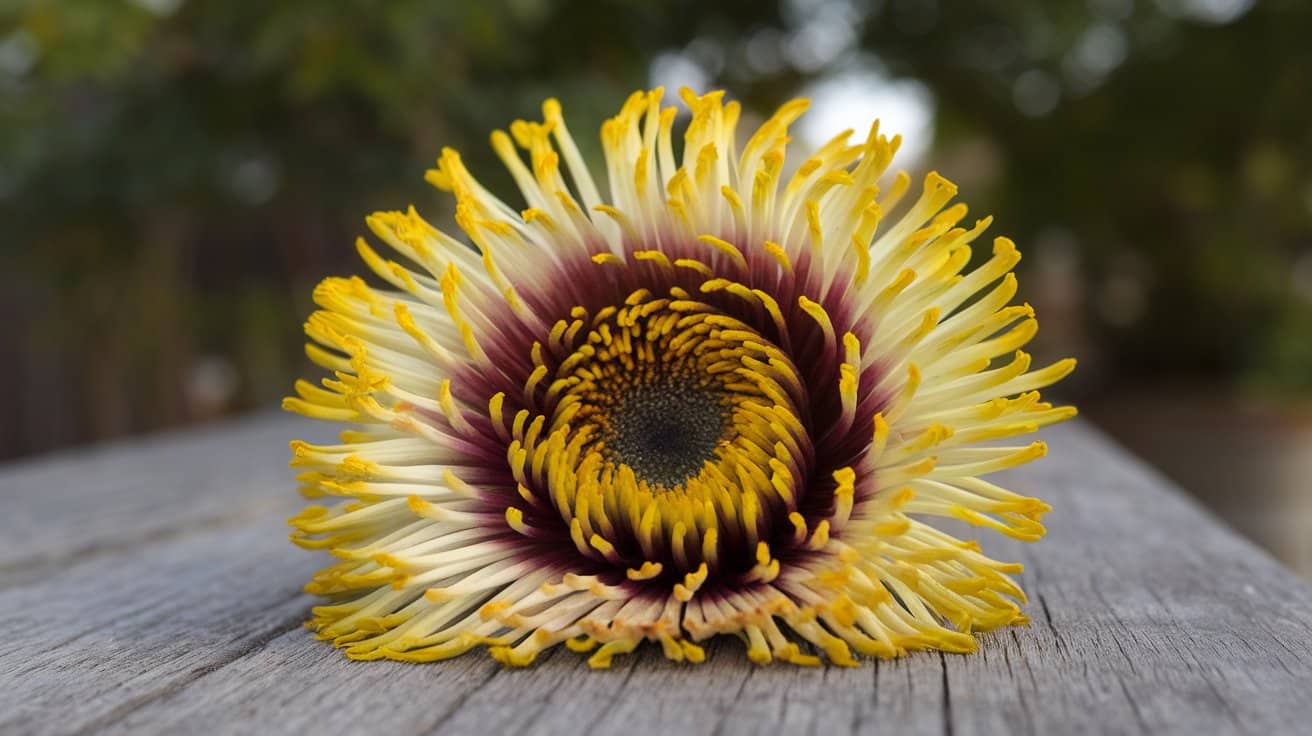
Hibbertia, also known as Guinea Flower, features bright yellow, star-shaped flowers and is commonly found in Australian gardens.
It is a hardy plant that thrives in poor soils and can tolerate drought conditions.
| Scientific Name | Hibbertia spp. |
|---|---|
| Family: | Dilleniaceae |
| Number of Species: | Over 150 |
| Native Regions: | Australia |
| Blooming Period: | Spring to Summer |
| Symbolism: | Joy, cheerfulness |
Uses and Benefits
- Popular in Australian gardens for its resilience and bright flowers.
- Used in native landscaping and ecological restoration projects.
- Provides habitat for local wildlife, including insects and birds.
26. Holly
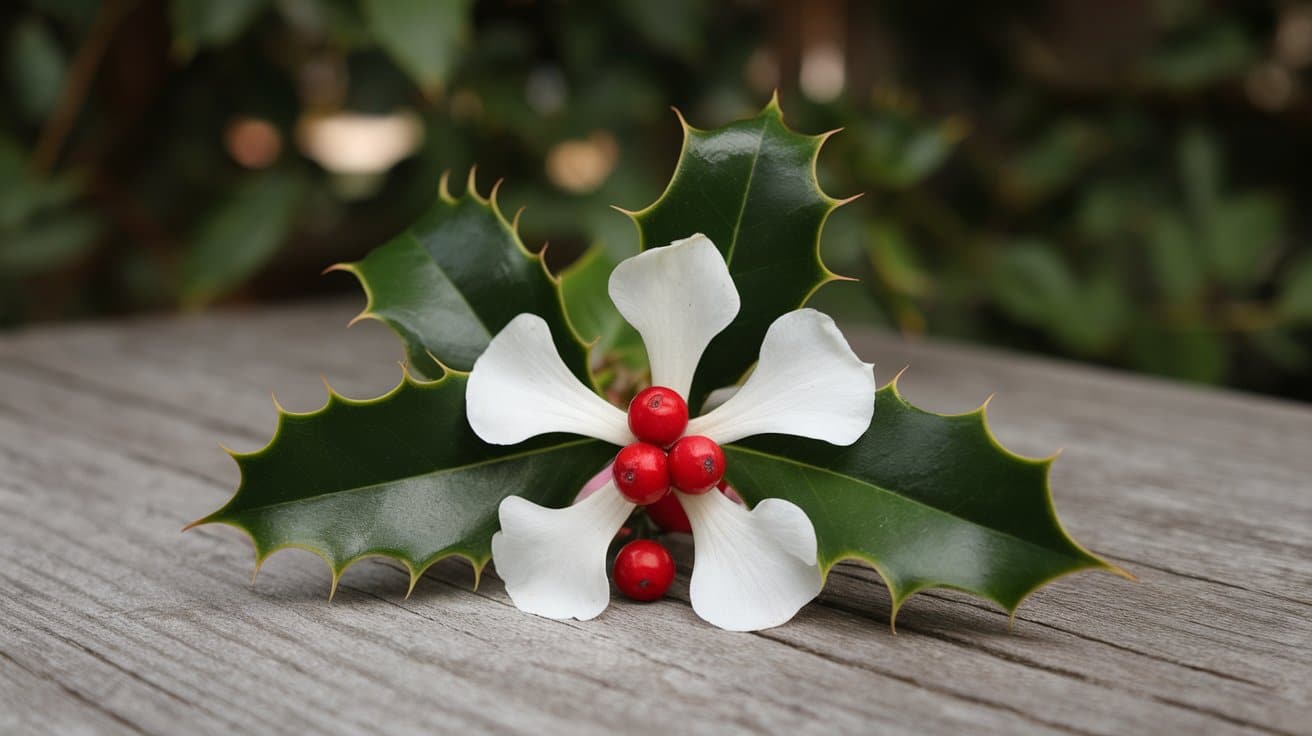
Holly is an evergreen plant with glossy, spiny leaves and bright red berries, commonly associated with Christmas.
Holly plants are versatile and can grow in various conditions, from full sun to deep shade.
| Scientific Name | Ilex aquifolium |
|---|---|
| Family: | Aquifoliaceae |
| Number of Species: | Over 400 |
| Native Regions: | Europe, Asia, North America |
| Blooming Period: | Spring to Early Summer |
| Symbolism: | Protection, good fortune |
Uses and Benefits
- Widely used in holiday decorations, particularly for wreaths and garlands.
- Ornamental value in gardens for year-round foliage and bright berries.
- Historically used in traditional medicine and folklore.
27. Helenium
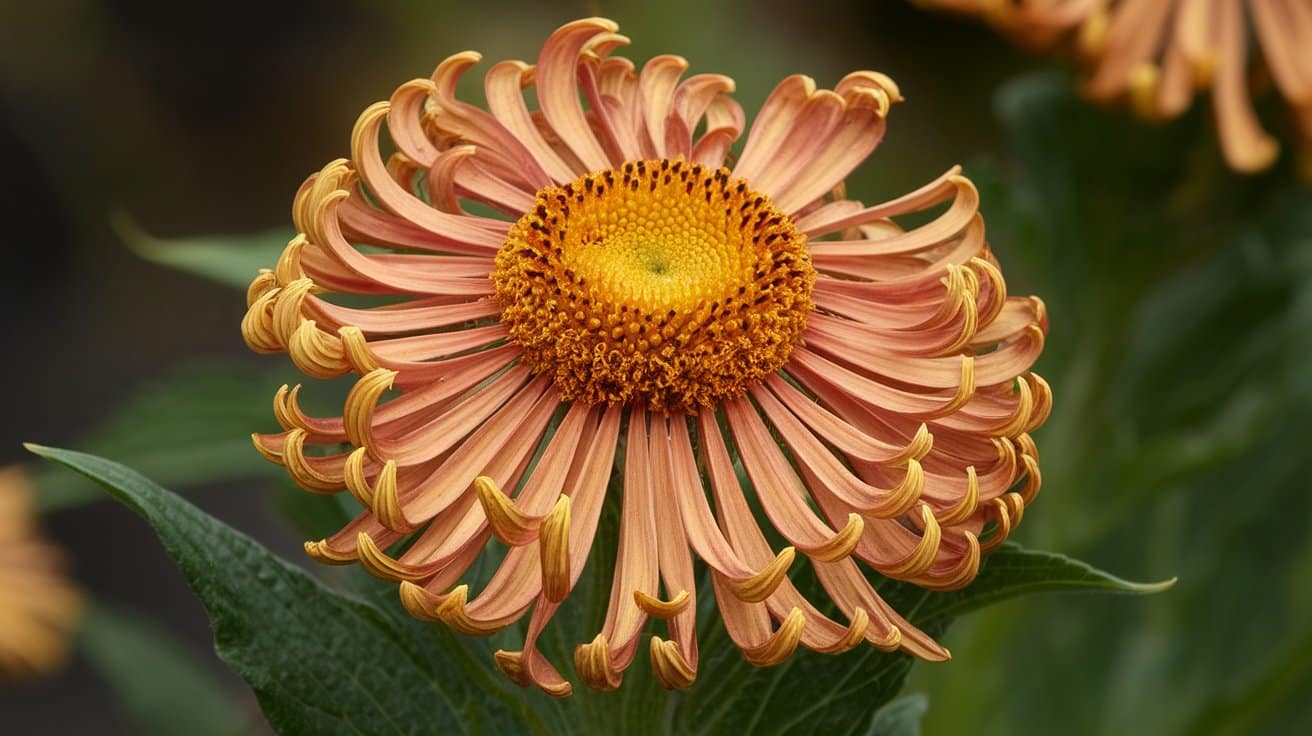
Helenium, also known as Sneezeweed, produces daisy-like flowers in vibrant shades of yellow, orange, and red. It is a popular choice for adding late summer color to gardens.
Helenium prefers full sun and moist, well-drained soil.
| Scientific Name | Helenium autumnale |
|---|---|
| Family: | Asteraceae |
| Number of Species: | About 40 |
| Native Regions: | North America |
| Blooming Period: | Late Summer to Fall |
| Symbolism: | Longevity, hope |
Uses and Benefits
- Adds vibrant color to late summer and fall gardens.
- Attracts pollinators, including butterflies and bees.
- Historically used in traditional medicine for respiratory ailments.
28. Hippeastrum
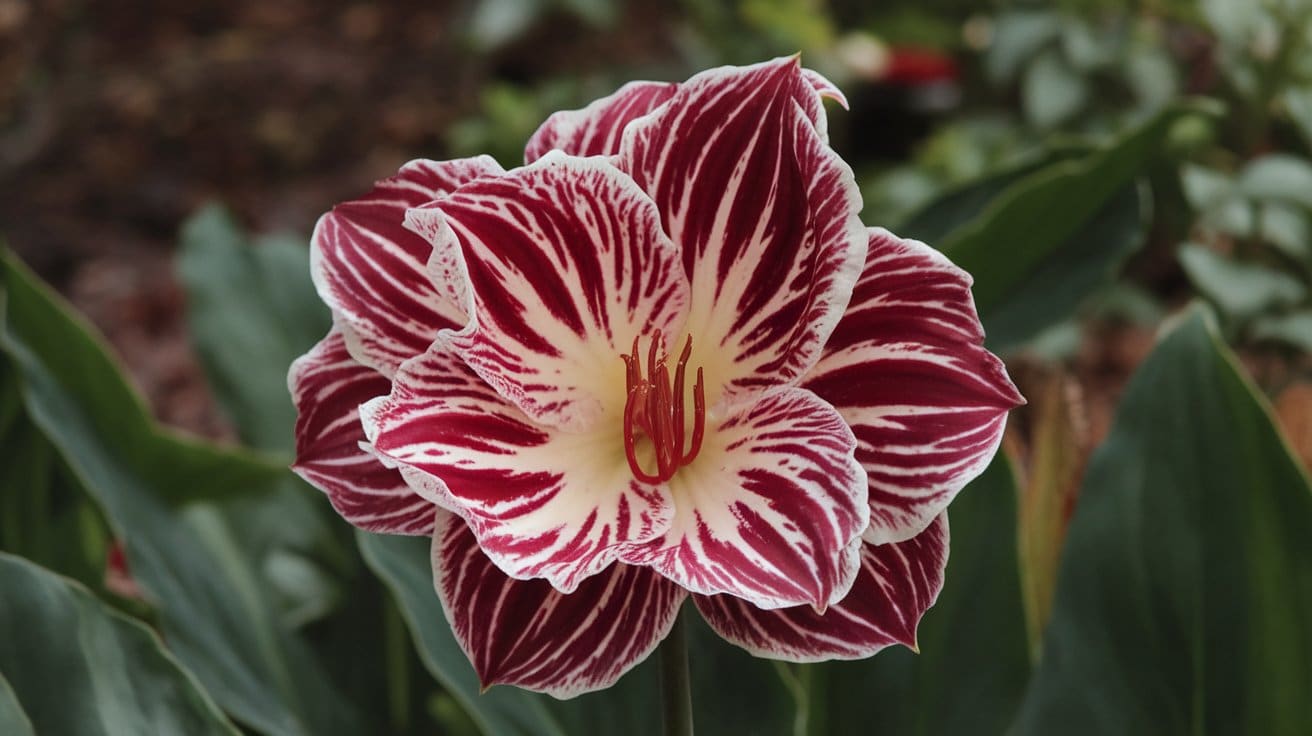
Hippeastrum, often referred to as Amaryllis, is known for its large, trumpet-shaped flowers that come in a variety of colors including red, pink, and white.
These flowers are popular during the holiday season. Hippeastrum prefers well-drained soil and bright, indirect light.
| Scientific Name | Hippeastrum spp. |
|---|---|
| Family: | Amaryllidaceae |
| Number of Species: | About 90 |
| Native Regions: | South America |
| Blooming Period: | Winter to Spring |
| Symbolism: | Pride, strength |
Uses and Benefits
- Popular as a winter-flowering houseplant.
- Often given as a gift during the holiday season.
- Adds a splash of color to indoor spaces during the winter months.
29. Helipterum
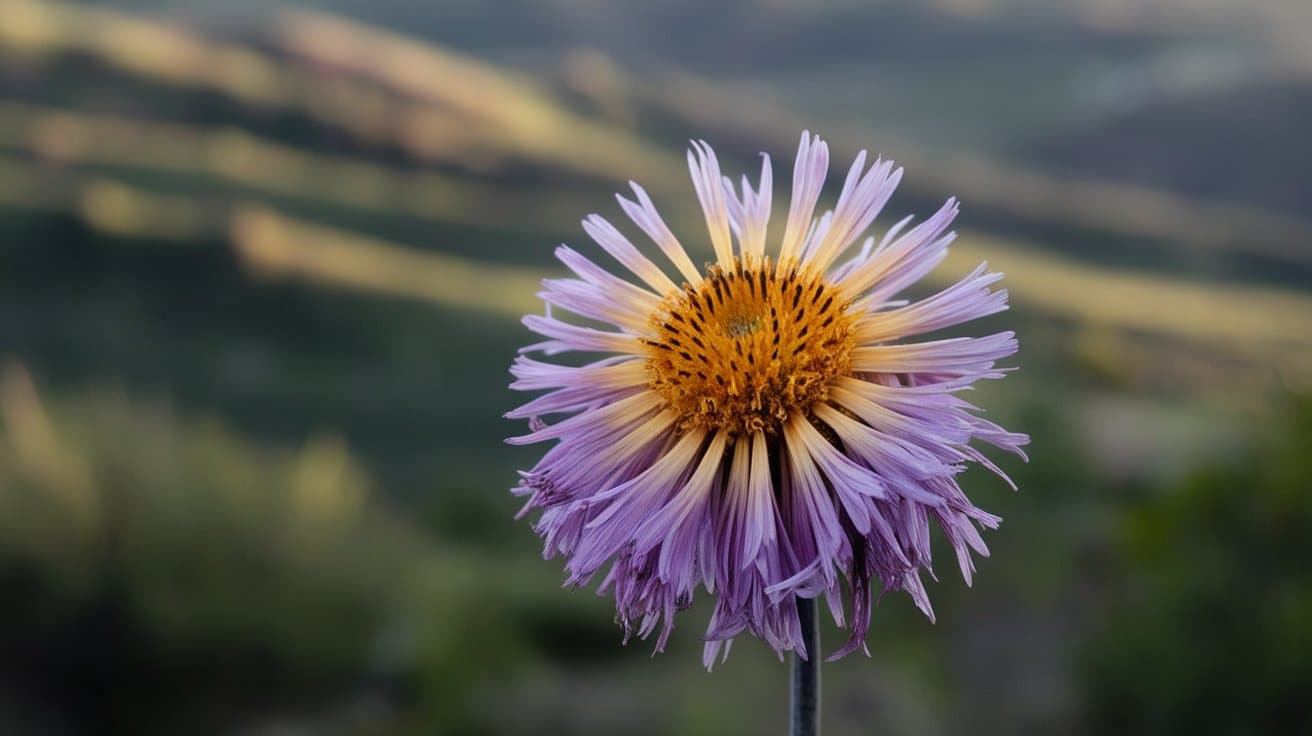
Helipterum, also known as Everlasting Daisy, produces papery, daisy-like flowers in shades of white, pink, and yellow.
These flowers are popular for dried arrangements because they retain their color and shape after drying. Helipterum thrives in well-drained soil and full sun.
| Scientific Name | Helipterum roseum |
|---|---|
| Family: | Asteraceae |
| Number of Species: | About 100 |
| Native Regions: | Australia |
| Blooming Period: | Spring to Summer |
| Symbolism: | Immortality, remembrance |
Uses and Benefits
- Commonly used in dried flower arrangements.
- Ideal for xeriscaping due to its drought tolerance.
- Provides long-lasting color in gardens with poor soil.
30. Heliophila
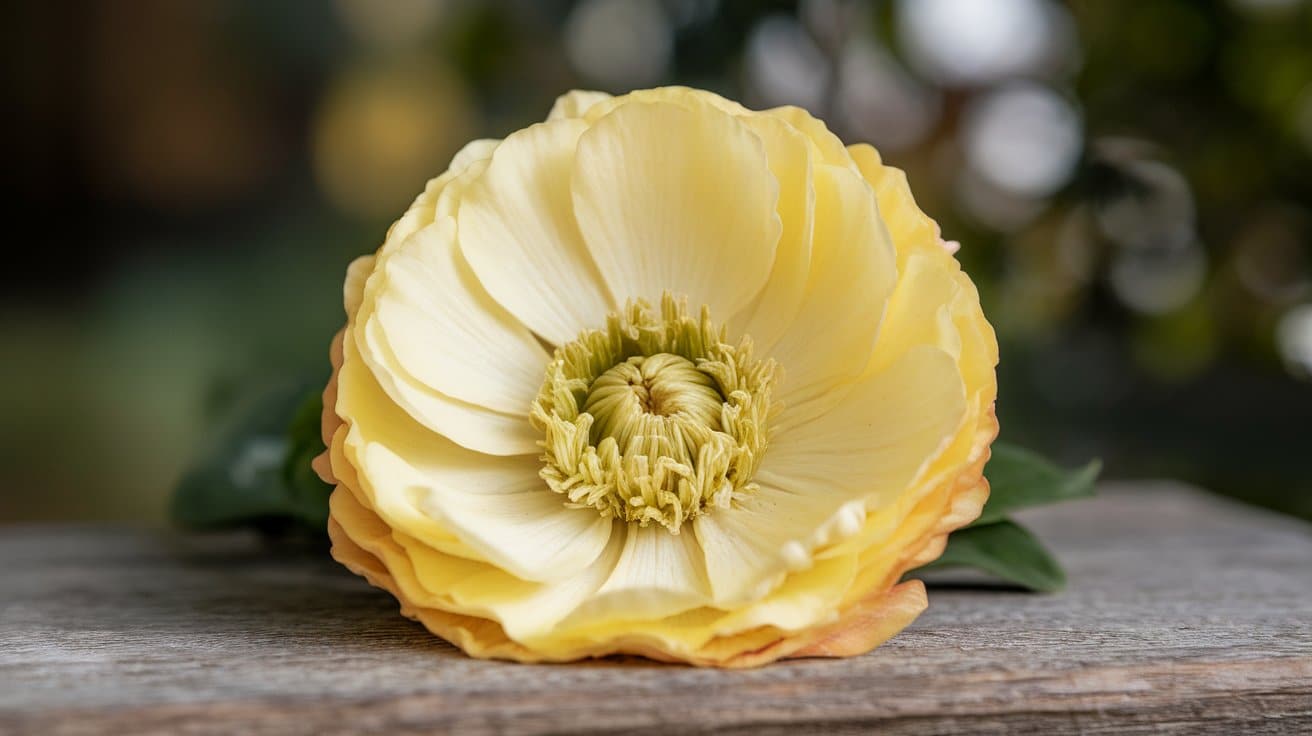
Heliophila, commonly known as Blue Flax, is a delicate plant with small, sky-blue flowers that bloom in the spring. The flowers are typically arranged in loose clusters, creating a cloud-like effect that is particularly striking in wildflower gardens and prairies.
Heliophila thrives in full sun and well-drained soil, making it an excellent choice for xeriscaping and low-maintenance landscapes.
| Scientific Name: | Heliophila coronopifolia |
|---|---|
| Family: | Brassicaceae |
| Number of Species: | About 80 |
| Native Regions: | South Africa |
| Blooming Period: | Spring |
| Symbolism: | Joy, simplicity |
Uses and Benefits
- Adds a soft, airy blue color to wildflower gardens and prairies.
- It is ideal for xeriscaping due to its low water requirements.
- Attracts pollinators such as bees and butterflies.
List of Rare Flowers that Start with H You Should Know
31. Hydrangea macrophylla
32. Humulus lupulus (Hops)
33. Helianthemum
34. Hoodia
35. Hoya carnosa
36. Hydrastis (Goldenseal)
37. Hyssop
38. Heliconia rostrata (Lobster Claw)
39. Hibbertia scandens (Guinea Flower)
40. Hylocereus undatus (Dragon Fruit Flower)
41. Heuchera
42. Houttuynia
43. Hyacinth bean (Lablab purpureus)
44. Hesperis (Dame’s Rocket)
45. Hemizonia
46. Hedysarum (French Honeysuckle)
47. Helianthus annuus (Common Sunflower)
48. Hippeastrum striatum
49. Heimia
50. Hymenocallis (Spider Lily)
51. Hibiscus coccineus (Scarlet Hibiscus)
52. Hordeum (Barley)
53. Hypocalymma
54. Hypochaeris
55. Hymenopappus
56. Hibiscus syriacus (Rose of Sharon)
57. Hesperaloe parviflora (Red Yucca)
58. Heliotropium arborescens (Cherry Pie)
59. Hibiscus trionum (Flower-of-an-Hour)
60. Hydrangea paniculata
61. Helonias bullata (Swamp Pink)
62. Heracleum mantegazzianum (Giant Hogweed)
63. Hebe (Shrubby Veronica)
64. Hibbertia aspera (Rough Guinea Flower)
65. Hemerocallis (Daylily)
Conclusion
Wow! Who knew there were so many beautiful flowers starting with H?
From the sunny Helianthus to the exotic Heliconia, we’ve seen a world of color and shape.
I hope this list has given you new ideas for your garden or floral arrangements. Maybe you’ve found a new favorite flower or learned something about a bloom you already love.
Remember, each of these flowers has its own charm and needs. Whether you’re planting a garden or picking a bouquet, choose the ones that fit your style and growing conditions.
What’s your favorite H flower? Are you excited to try growing any of these in your garden? Let me know in the comments below!
Happy gardening, flower lovers!

